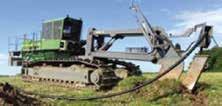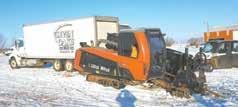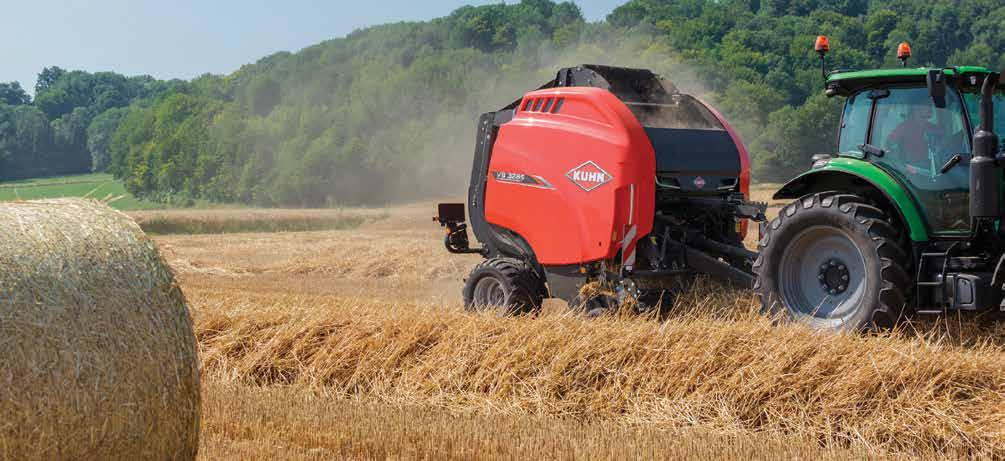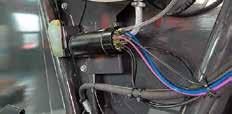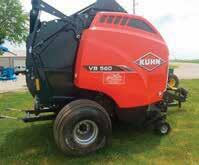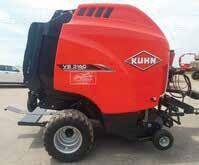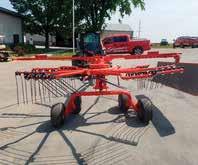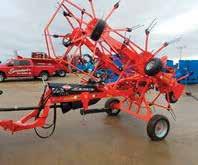

“All
Calkins family dairying on farm established in 1864





“All


Continued learning leads to more questions on H5N1 in dairy cattleBy Danielle Nauman danielle.n@dairystar.com
Since the initial detection and identication of H5N1 in dairy cattle in March, all facets of the dairy industry have been working diligently to learn more about the disease, how it is spreading and the impact it is having on dairy cattle.
As of April 22, the bovine inuenza A virus has been identied on 33 dairy premises in eight states: Texas, 12; Michigan, 6; New Mexico, 6; Kansas, 4; Idaho, 2; and one case each in North Carolina, Ohio and South Dakota.
“This is rapidly changing and evolving; information is coming in by the day, by the hour,” said Dr. Mark Lyons, director of ruminant health for the U.S. Department of Agriculture’s Animal and Plant Health Inspection Services, in a webinar hosted by the National Milk Producers Federation April 17.
According to Lyons, the genome sequences show the strain of the virus present in dairy cattle in all affected states is similar to what has been found in wild birds.
The initial introduction of the disease from wild migratory birds into dairy cattle likely took place somewhere in the Texas panhandle, Lyons said, adding the virus appears to be transmitting laterally between cattle, but that exact transmission route remains unclear.
“This is inuenza,” Lyons said. “It is very unpredictable. It is important for us to keep monitoring it.”
Because of those unknowns regarding transmission of the disease, biosecurity is the best defense dairy farmers have, said Dr. Keith Poulsen, director of the Wisconsin Veterinary Diagnostic Laboratory.
BLUE EARTH, Minn. — Pioneering travels and tragedy cloak four 161-year-old trunks resting from their adventures in the attic of the Calkin family.
Bob and Lori Calkins own a sesquicentennial dairy farm near Blue Earth. Their 300 acres encompass the family’s original homestead claim from 1864.
“It’s a cool thing to know that four, ve generations of my ancestors have been here on this farm and started it,” Bob said.
Today, the Calkin family’s dairy farm has its building site a little way from the original home’s foundations, which are still in the woods.
Turn to CALKINS | Page 6


NEW LONDON, Minn. — One year ago, Tom Kampsen and Becky Heinz set a plan to build a parlor on Kampsen’s dairy farm near New London. They decided to utilize the existing structure of their tiestall barn.
Milking took four hours each time, turning the barn over twice with 48 cows in each group and using six units.
Poulsen said when H5N1 makes its way into a dairy herd, the virus peaks in the rst 4-6 days, tapering off by days 10-12. He said most dairies are reporting a recovery of approximately 30-45 days.
Poulsen urged producers not to wait too long before reaching out if they suspect the virus is in their herd.
320-352-6303 (ofce) 320-248-3196 (cell) 320-352-0062 (home)
Ad Composition - 320-352-6303
Nancy Powell • nancy.p@dairystar.com
Karen Knoblach • karen.k@star-pub.com
Annika Gunderson • annika@star-pub.com
Maria Bichler - Assistant
Stacey Smart - Assistant Editor 262-442-6666 • stacey.s@dairystar.com
Danielle Nauman - Staff Writer 608-487-1101 • danielle.n@dairystar.com
Abby Wiedmeyer - Staff Writer
608-487-4812 • abby.w@dairystar.com
Tiffany Klaphake - Staff Writer 320-352-6303 • tiffany.k@dairystar.com
Jan Lefebvre - Staff Writer jan.l@star-pub.com
Amy Kyllo - Staff Writer amy.k@star-pub.com
Emily Breth - Staff Writer emily.b@star-pub.com Consultant
Jerry Jennissen 320-346-2292
920-979-5284 • kati.s@dairystar.com
Jerry Nelson (SW MN, NW Iowa, South Dakota) 605-690-6260 • jerry.n@dairystar.com
Mike Schafer (Central, South Central MN) 320-894-7825 • mike.s@dairystar.com
Megan Stuessel (Western Wisconsin) 608-387-1202 • megan.s@dairystar.com
Julia Merten (Southeast MN and Northeast IA) 507-438-7739 • julia.m@star-pub.com
Bob Leukam (Northern MN, East Central MN) 320-260-1248 (cell)
bob.l@star-pub.com
Mark Klaphake (Western MN)
320-352-6303 (ofce) • 320-248-3196 (cell) Published
“Very active observational surveillance is important,” Poulsen said. “The best way to respond to this is with strong communication. If you see something, call your veterinarian, ask questions. It’s OK to be wrong; it’s OK to have a negative test. I’d much rather have a negative test than not test at all and miss something.”
Polymerase chain reaction testing of raw milk is the best indicator of the presence of the virus, Poulsen said. Serology testing is not a measure of an acute infection but of an immune response, Poulsen said, adding that cows and mammals in general do not respond to inuenza well with antibodies. Poulsen said work is being done to develop diagnostic options.
Because H5N1 is a virus, Poulsen said antibiotics are only recommended in the presence of a secondary infection, suggesting farmers facing the virus work with their veterinarian to develop protocols for supportive therapies.
Poulsen said all milk from cows with clinical symptoms should be discarded and not used for feeding calves.
Turn to H5N1 | Page 5
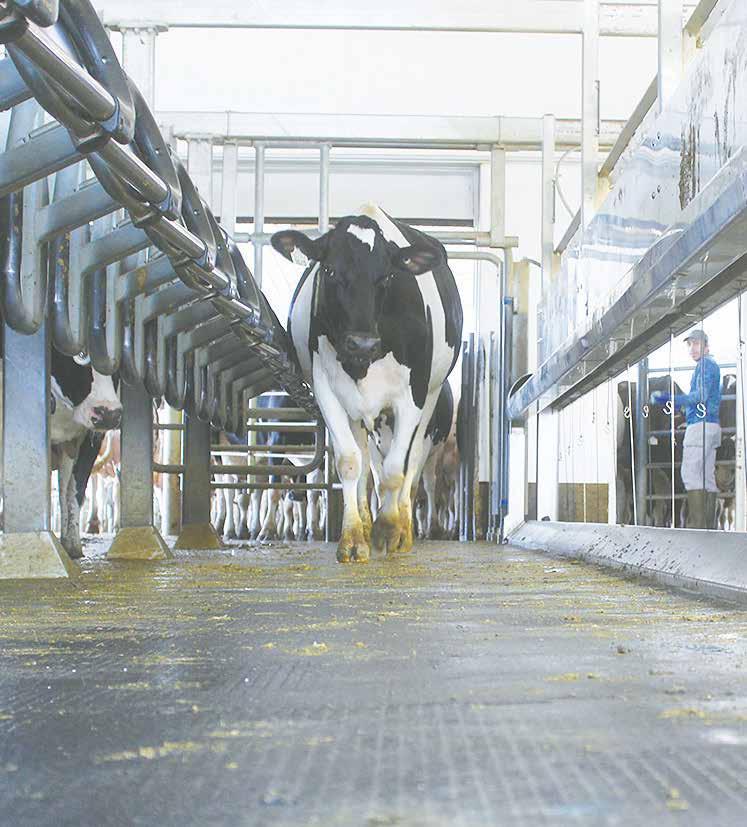



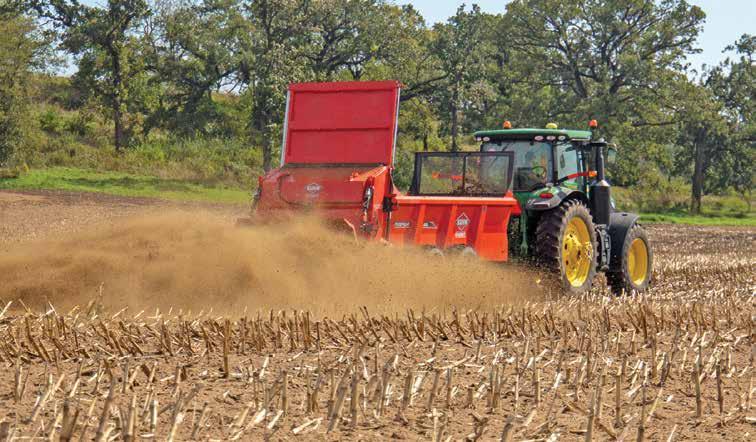






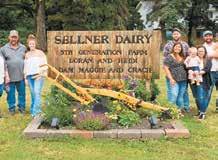
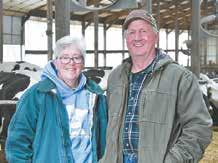

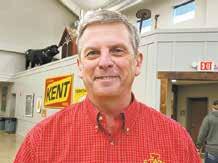
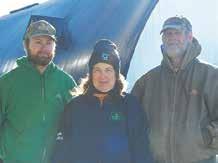




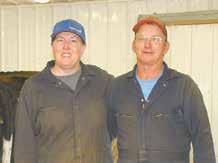



started with










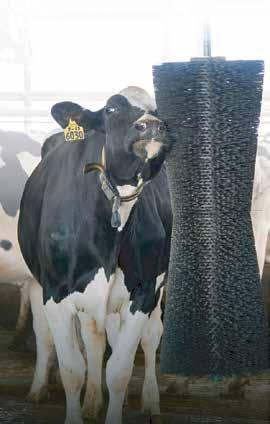


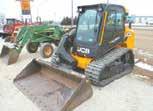

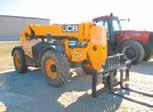



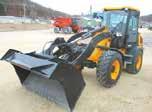

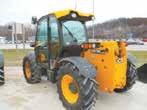




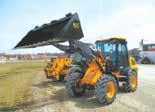









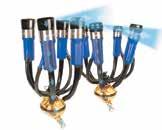

He also recommends that all calf milk be pasteurized.
“Pasteurization is always the gold standard,” Poulsen said. “There is no data out there that makes us think pasteurization is not 100% effective in killing the virus.”
Dr. Jason Lombard, an associate professor and dairy systems specialist at Colorado State University, addressed ways dairy farmers can implement biosecurity measures on their farms to help mitigate risk.
“Enhanced biosecurity is implementing management practices to protect cattle and people from exposure,” Lombard said.
The rst thing to consider is how disease enters a farm, Lombard said. This could be by animals and animal products; airborne; rodents, birds, ies and wildlife; vehicles and equipment; people; and through feed, water and bedding.
Lombard said biosecurity starts by monitoring sick animals and minimizing cattle movement as much as possible.
“We know that movement of cattle is what introduced the virus to some states,” Lombard said. “If we have to move cattle, then premovement testing is recommended along with quarantining new arrivals for at least 21 days.”
Recommendations for premovement testing include testing of milk samples taken from lactating cows and nasal swabs taken from non-lactating animals.
“If possible, delay or stop incoming or returning animals
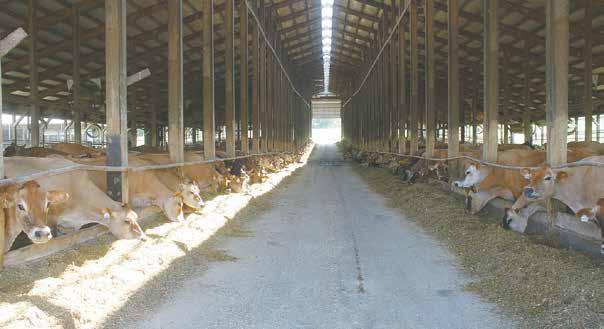
Jersey cows eat a total mixed ra on on a Wisconsin dairy farm. One of the
the bovine inuenza A virus is reduced
from herds with unknown or suspect health status,” Lombard said. “Be sure to separate all new or incoming animals. Work closely with your veterinarian on how to best do this for your herd.”
When faced with sick animals, Lombard encourages dairy farmers to have a dedicated plan.
“Don’t have sick animals sharing air space, panels, fence lines, feed or water with others,” Lombard said. “Ideally, there would be dedicated caretakers and equipment for these animals. At the minimum, workers should be wearing (personal protective equipment) that is changed. Look to your veterinarian for advice on testing and
decreased
criteria for when sick animals can be returned to the herd.”
Cattle movement considerations include the use of equipment such as cattle trailers, Lombard said.
“Livestock trucks and trailers are an unknown risk since we don’t know how the virus is transmitted from cow to cow,” Lombard said. “We should try to limit the use of trailers to a single source — one herd. We should be cleaning and disinfecting the interior of the trailer between each load of cattle.”
The presence of other animals on the farm, particularly birds, is one of the more daunting arms of implementing enhanced biosecurity measures, Lombard said.
“Birds are probably the most difcult thing to keep off a dairy operation in terms of biosecurity,” Lombard said. “We can manage a lot of things, but birds are really difcult. If they are playing a role in the continued spread of the disease, then that’s a concern.”
Disrupting the on-farm habitat such as taking away access to shelter, feed and water is critical but nearly impossible, Lombard said.
Limiting visitors and vehicles that come to the farm is another important step in creating an enhanced level of biosecurity, Lombard said.
“Limit visitors to essential personnel and keep a visitor log so you know who was on
the farm and when they were there,” Lombard said. “Visitors should stay away from the animal areas unless absolutely necessary. PPE should be worn by all visitors: coveralls, boots, gloves, masks and safety glasses or goggles.”
Lombard recommends keeping all parked vehicles in a clean area away from the cattle and where they move. He recommended having delivery drop-off areas located on the periphery of the premises.
With the concern that the virus can be spread through contact with raw milk, Lombard said milk truck biosecurity is paramount.
“Milk truck drivers should be wearing PPE and observing all biosecurity practices,” Lombard said. “Transfer hoses should be disinfected between farms, or ideally, there would be farm-dedicated transfer hoses.”
With so many unknown factors surrounding the transmission and long-term effects of the virus, enhanced biosecurity is the best tool dairy farmers have, according to Lyons.
Enhancing biosecurity in dairy, poultry and all industries is important, Lyons said. It is also paramount to be vigilant about monitoring sick animals and looking for disease in birds and ocks.
“Biosecurity is what we are emphasizing to get ahead of the spreading,” Lyons said. “This is something we’re going to have to face together, making sure we are identifying sick animals and getting samples to test.”


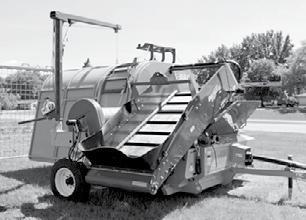
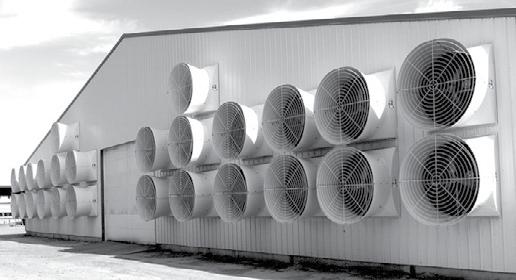
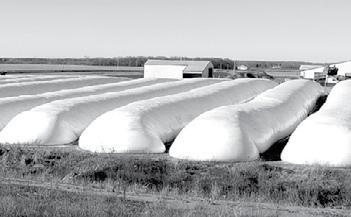

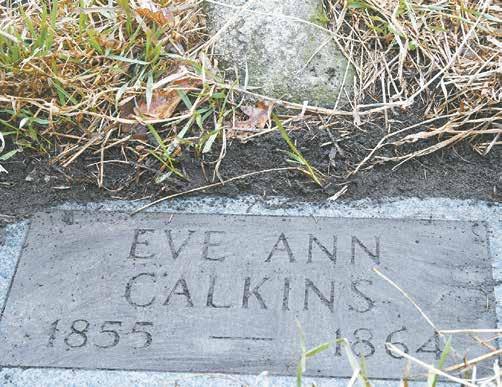
A gravestone marker for Eve Ann Calkins lies next to a stone April 2 on the Calkin family’s dairy farm near Blue Earth, Minnesota. Eve Ann passed away from diphtheria in 1864, the rst winter her family was on the farm. The stone next to the gravestone was the original marker for her grave.
The Calkins milk their cows in a double-8 herringbone parlor they built in 2006.
“(Dairy farming is) a good t with our farm,” Bob said. “We don’t have a tremendous amount of acres here, and we’re able to utilize some manure and be efcient with the cropping.”
Bob and Lori are assisted by eight full- and part-time employees.


Cows are housed in a freestall barn built in 1999. Calves are housed in hutches inside a hoop barn during the winter and outside during the summer. Lori feeds the calves and likes the hoop house for the winter.
“I don’t have to be in the ice and the rain,” Lori said.
we bought,” Bob said. “I had a champagne taste on a beer budget.”
Today, they milk 240 cows. But their story begins in 1863, when Bob’s great-great-grandfather, David, and his wife, Mary, headed west. According to “Martin County, Minnesota History,” they traveled with four young children in an oxen-drawn, covered wagon. Accompanying them were two cows, two heifers, two calves and four trunks.



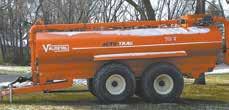

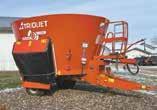





Bob and Lori moved to Bob’s family’s farm in 1988 after Lori nished her education at Iowa State University to become a veterinarian.
The Calkins took over the farm in 1993 and purchased it in 1997.
“I like farm life,” Lori said. “I like the independence; I don’t like the price. But, you have to take the good with the bad.”
When the Calkins moved back in the late ’80s, the farm was milking about 40 cows.
“We just gradually expanded from within, besides a few registered cows
According to “Martin County’s Heritage,” the Calkins’ ancestors crossed the mighty Mississippi via ferry because there was no bridge. They arrived on the prairies of Minnesota in November 1863 and chose a plot of wooded land on the east side of Lake Burnt Out.
Over the winter, their 9-year-old daughter, Eve Ann, died. According to “Martin County’s Heritage,” she succumbed to diphtheria, which was epidemic at the time. It said she was the rst recorded death in the township and that she was buried on the highest point of the farm. Bob said that her burial spot was her favorite vantage point to look over the lake.

Her grave was marked simply with a large stone, the tip of which is visible today. Bob’s parents placed a at engraved stone marker for her so her burial place would not be forgotten.
Bob’s great-grandfather, Amos, was a child when the family moved to Minnesota. The book tells the story of when a nearby settler decided to move to Sioux Falls, South Dakota. He had Amos help him herd his cattle for the 125-mile journey. It was fall, and when they arrived in South Dakota, 13-yearold Amos was sent back by himself on a poor-quality pony.
Amos made the journey across a prairie with no roads and few settlers. Most of the nights were spent camping on the prairie, fearing wolves and Native Americans. It said Amos thought he was not going to live through it.
The Calkins family has stories of Native Americans camping at their farmstead and other experiences. Care was taken to not disrupt the equilibrium.
Bob and Lori’s home was built in 1918 by Bob’s grandfather, John Calkins. Theirs was the rst rural home in Martin County to have electricity, according to “Martin County, Minnesota History.”
John was innovative. According to “Martin County, Minnesota History,” John was born in 1887 and graduated from the University of Minnesota in 1908. He purchased half of the Calkin’s farm from his father, Amos. On it, he created a “model farm,” with the building site in the middle of his land equidistant from his elds.
The Calkins have meticulous records and drawings done by John. They range from hand-drawn maps of their land’s tile ditches from 1908, including elevation, a crop rotation plan for the years 1914-19 and manure charts for the

Bob Calkins
same years.
The lake on the farm, which was quite shallow, was part of a chain of disintegrating lakes in the area. According to “Martin County, Minnesota History,” from 1904-12, Amos was part of a project to help drain the lakes, adding approximately 50 acres to the farm.
In 1946, the Calkins family was an early adopter of articial insemination. According to a journal article by W. Ombelet and J. Van Robays, the rst A.I. cooperative in the U.S. was started by a dairy farmer named E.J. Perry from New Jersey in 1938.
Today, after more than 160 years as a dairy farm, Bob said he does not know what the future will be.
“It’d be really cool to see somebody here using the parlor and the barn,” Bob said. “Frankly, it’s pretty hard to encourage children to do it, just because of what we’ve gone through over the years. ... I’m not saying we regret it.”





“That got old really fast,” Kampsen said. “It was a lot of labor. We were feeding cows in a freestall barn and feeding cows in a tiestall barn.”
Construction on the parlor began last July, and on Oct. 12, 2023, the couple began milking in their new facility. However, getting through the building process, they said, was a trial of perseverance as they continued to milk their cows in the barn while construction sights and sounds took place all around them.
“We were milking in 20 stalls on one end of the barn while the other end was ripped out, so the cows were spooked,” Kampsen said. “The last week, we milked in eight stalls and just had a pipeline hung from the ceiling with wire all the way to the milk room, and it took 5-6 hours for milking each time, because we could only use four units. It was a big pain in the butt during construction, but we got through it.”
Today, Kampsen and Heinz milk their herd of mostly Holsteins and some Jerseys in a double-7 herringbone parlor in their revamped facility. The parlor equipment is from Heinz’s farm near Brooten where she used to milk cows. Kampsen and Heinz are planning to grow the milking herd at Kampsen’s site to about 170.
“The parlor is way easier on the cows; they come in pretty much on their own,” Kampsen said. “Time savings is also big. The parlor cuts

Cows
and
milking time in half.”
A team of two can now milk the cows in two hours. Kampsen, who usually does the morning milking, can nish the job in three hours. Heinz handles most of the evening milkings with a part-time employee.
With the parlor completed, Kampsen and Heinz are looking toward their next project.
“Now we want to add on to the freestall barn this year and
(create) a bedding-pack barn so that we can put trouble cows and fresh cows on bed packs,” Kampsen said.
The freestall barn, built in 2021, is 50- by 120-feet. This summer, they will add 60 feet to the barn and increase from 70 stalls to 113.
The expansions on the farm are being done with the next generation in mind. Kampsen’s three sons are con-
sidering joining the operation.
Kampsen’s son, Dylan, was working with him full time when they built the existing freestall barn. Dylan then enlisted in the Marines, but he will likely come back to dairy farming in two years. Ayden will be 18 this fall. Kampsen said he intends to farm full time after high school. Tommy, 13, is already talking about possibly farming.
“(My sons) have plans and dreams, so we’ll see how it goes,” Kampsen said.
Heinz said building the parlor has been worth it for her and Kampsen, but they and their cows had to go through a learning curve.
“Even for us, just getting into a routine, and then for the cows to get into a routine, it took about six months before it came down to two hours for milking,” Heinz said. “Part of the issue was all the construction for several months in the cows’ environment.”
Kampsen agreed.
“They didn’t know if they were coming or going,” he said. “I’m glad that part is done. Production went down just because of the big transition, but it’s coming back.”
Heinz said they are noticing health benets to the herd as well.
“The somatic cell count has been cut in half,” she said. “When we rst started using the parlor, we had some areups. … But now, if we have one areup a week, that would be a lot.”
Kampsen and Heinz said they are happy with the costsaving measures they took while planning and building, which is making their expansion affordable. At rst, they thought about building everything new, but using the shell of the tiestall barn made nancial sense to them.

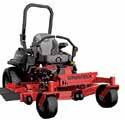





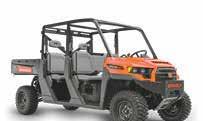









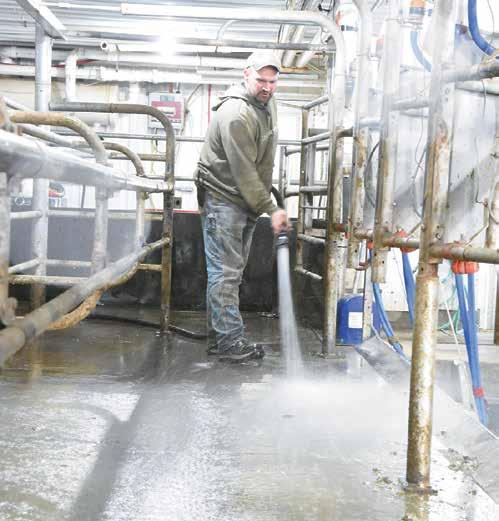
The pipes for the parlor were put in the tiestall barn’s gutters and cemented in, and now drainage from the parlor is pumped through the pipes to the pit. The parlor and concrete work were completed by D&D Agriculture Supply & Construction of Pennock. The other work was done by Kampsen and Heinz with help from family and friends.
“My dad, Tom, did most of the carpenter work, and he also did most of the plumbing besides in the parlor,” Kampsen said.
Tom also did most of the steelwork, with Kampsen assisting. Kampsen’s cousin took a week off from his job to help with welding. Friends and other family came to help when they could.
While planning the parlor, Kampsen and Heinz considered various options.
“Becky had seen a lot of parlors when she worked in nutrition, and she saw some of what worked and what didn’t,” Kampsen said.
For the project, the couple was able to use parlor equipment from Heinz’s farm. They had thought about installing a robotic milking system but put that off for now.
“It came down to that we’d have to redo all the electrical for the farm (for robots),” Heinz said. “All those things would add a lot more expense.”
Kampsen agreed.
“The way we did it was very affordable,” he said. “At the end of the day, you can spend a million dollars on new equipment and such, but milk is still worth 15 bucks.”
Construction of the parlor involved a whirlwind of activity for the couple each day.
“There were many nights when I would go inside in my work clothes and
sit in my chair at 1 or 2 in the morning,” Kampsen said. “Then, I’d get right back up at 3 or 4 in the morning to go back out to work.”
Already, the parlor is allowing them to grow their herd while simultaneously giving them more time off and freedom.
Since the parlor is easier for employees to manage, Kampsen and Heinz have been able to schedule date nights and more family time. Heinz said she is nding a better balance and is able to give more time to her two daughters, Hailee and Evalyn, who come to Kampsen’s farm almost every day. Hailee has begun helping with milking and calf chores.
“This is the rst time I’ve been able to be a full-time dairy farmer,” Heinz said. … “Timewise, I had two kids who were getting the short end of the stick, and now I can be there. I can be there in the mornings and get them on the bus.”
Kampsen is nding more time for relaxation.
“I’ve always wanted to go to the (Central Plains) Dairy Expo, and I’ve never been able to do that,” Kampsen said. “This year, we went. It was fun.”
Mostly, Kampsen said he likes working with his family, and the expansion is making room for that.
“I like the family together, working together … side by side,” Kampsen said.
Weathering the construction storm has given the couple a sense of accomplishment.
“It was nice just to be able to breathe and be thankful for what we have and all the help we had,” Heinz said. “Now that we’ve had the winter to settle down and get some sleep, and with chores taking so much less time so that we can be done by 7:30 most nights, it’s nice to get in the house and make a good meal and enjoy the fruits of our labor.”
In the April 13 edition of Dairy Star, in the article, “A family of milk haulers: Swart passes love of job to next generation,” Tanner Rohner was incorrectly stated as being a stepson of Darren Swart. Rohner is a son of Swart. Dairy Star staff regrets this error.


“We like that the grooming brushes remove the winter hair and it keeps the cows cleaner and our parlor cleaner. The brushes are also easy to repair if necessary. Cows love them.”
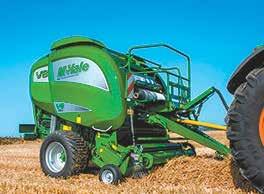



The U.S. Department of Agriculture is working with state animal health ofcials to collect data about the spread of bovine inuenza A virus in dairy cattle. USDA chief veterinary ofcer Dr. Rosemary Sifford stresses the importance of this information. “It is important to us at this time to receive samples from these herds so we can get a more clear picture of what is going on,” Sifford said. “So far, it appears that the cattle can recover after a couple of weeks.”
Document your losses
As of publication, bovine inuenza A virus has been conrmed in dairy cattle in eight states. That list includes one dairy herd from South Dakota. “I suspect we will (see) some (cases),” said Thom Petersen, Minnesota Department of Agriculture Commissioner. “We may have it already.” Indemnity payments are made to poultry farms impacted by highly pathogenic avian inuenza. We asked Petersen if dairy farmers can expect similar assistance. “Document your losses, just like we do for other disasters, and if the USDA comes with an indemnity-type plan, we would be able to hopefully help those farmers out,” Petersen said. “People are saying the cow doesn’t die, but it doesn’t give milk. There is a loss of production.”
The current farm bill extension expires at the end of September, and there’s no apparent timeline for a vote in either chamber. U.S. Sen. Tina Smith, who is a member of the Senate agriculture committee, is anxious to move forward with the farm bill. “I just had a long meeting with Chair Debbie Stabenow from Michigan, and I know many of us on the committee and Sen. Stabenow are really eager to get this done,” Smith said. “It’s no secret we’ve been having a couple of big disagreements (over budget priorities) on the farm bill.” Stabenow will retire at the end of this year and wants to get the farm bill done on her watch. However, Smith
emphasized Stabenow will only support legislation that is good for farmers and consumers. “It’s pretty likely that our very own Minnesota (Sen.) Amy Klobuchar will be the next chair or ranking member of the agriculture committee, so that’ll be really great for us in Minnesota,” Smith said.
Congress, common food names
The House Committee on Ways and Means has approved the renewal of the Generalized Systems of Preferences trade program for agriculture-specic products. This bill protects the generic use of common food and beverage terminology, such as Parmesan and feta. The European Union has been trying to impose restrictions on these terms based on geography. Minnesota Rep. Michelle Fischbach is one of three lawmakers who were behind this bill. The NMPF, U.S. Dairy Export Council and the Consortium for Common Food Names praised this action.
Ford named to TIME 100
 By Don Wick Columnist Ag Insider
By Don Wick Columnist Ag Insider
The environment policy bill includes technical provisions tweaking Minnesota’s 2015 buffer law. That includes language giving the Minnesota Board of Water & Soil Resources regulatory authority over buffer zones. “There may be a local entity that is not doing the implementation,” Rep. Rick Hansen said. “This actually provides a procedure for the Board of Water & Soil Resources to make sure that there’s a process if they are revoking that authority.” Rep. Jeff Backer of Browns Valley spoke in opposition, saying this is a “top-down” approach. “This could be interpreted as if BWSR does not like what the local soil water conservation district is doing, they will be forced to become the bad cop even though they have worked over the last 10 years to help get the landowners into compliance,” Backer said. The amendment to maintain local control was rejected.
TIME magazine has named Land O’Lakes Inc. President and CEO Beth Ford to its annual list of the 100 most inuential people in the world. Ford has been in her current role since 2018. Ford is also part of the President’s Export Council.
Midwest Dairy CEO takes the job at a unique time for the industry
Corey Scott is in her early days as the new executive director of Midwest Dairy. Scott spent the last 15 years of her career with Land O’Lakes and its sustainability division, Truterra. “It’s a unique time to be coming into a checkoff role given what the economics look like,” Scott said. “With my background in risk management, it forces me to take a very critical business look at how we’re deploying checkoff dollars. We don’t have the luxury to be using checkoff dollars in such a way that we can’t quantify the impact.”
Sawatzke, Hawkins reelected
Proposal impacts animal agriculture expansion
Minnesota Rep. John Burkel, of Badger, who serves on both the agriculture and environment committees, is disappointed in the efforts to increase the regulatory pressure on farmers. That includes a proposal to require an environmental impact statement for any farm with more than 10,000 animal units. “It would probably eliminate anybody’s ability to expand and, once again, opens the door to the conversation about dropping that threshold to 5,000 or 1,000 animal units in the future,” Burkel said. “It puts the brakes on any expansion of animal agriculture in Minnesota.” Burkel hopes this language won’t survive the conference committee process.
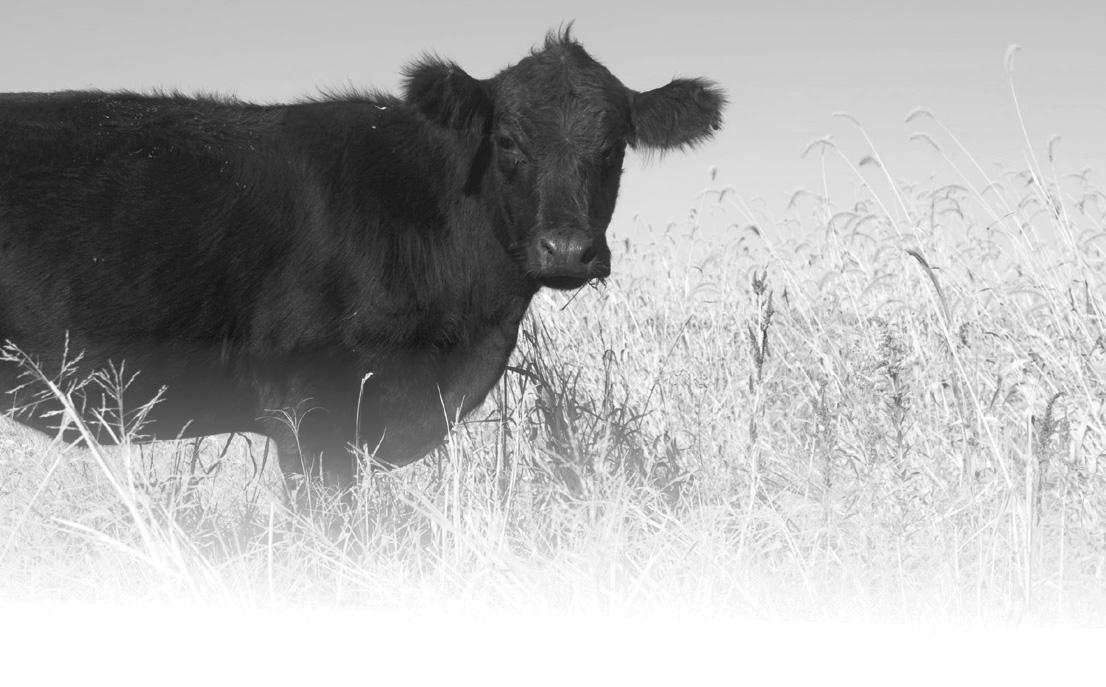
At the end of March, dairy cow slaughter nationwide was down 14.2% from one year ago. Beef cow slaughter is down 11.3%. The demand for ground beef has kept slaughter cow prices high. The value of the 90% lean beef trimmings used for hamburger meat is record high.
Dave Peterson is the new board chairman for Associated Milk Producers Inc. Peterson, who farms near Boyd, Wisconsin, succeeds Steve Schlangen, of Albany, Minnesota. Schlangen served as AMPI’s board chairman since 2011. The vice chairman is Dennis Hawkins of Chippewa Falls, Wisconsin. Steve Hoffman of New Ulm, Minnesota, returns as secretary. Schlangen now takes over as treasurer.
The Minnesota Board of Animal Health has reelected Erica Sawatzke as president and Peggy Anne Hawkins as vice president. Sawatzke is a turkey farmer near Kensington, Minnesota. Hawkins is a veterinarian in Northeld, Minnesota. The BOAH is a seven-member citizen board appointed by the governor.
Trivia challenge
National Blue and Corn Gold are the ofcial colors of the National FFA Organization. That answers our last trivia question. For this week’s trivia, which common dairy breed originated in Scotland? We will have the answer in our next edition of Dairy Star.
Don Wick is owner/broadcaster for the Red River Farm Network of Grand Forks, North Dakota. Wick has been recognized as the National Farm Broadcaster of the Year and served as president of the National Association of Farm Broadcasting. Don and his wife, Kolleen, have two sons, Tony and Sam, and ve grandchildren, Aiden, Piper, Adrienne, Aurora and Sterling.








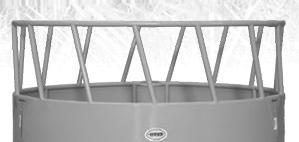






How long have you been testing with DHIA?
We have been testing with DHIA since the early 70’s when my grandpa, Fred, started testing with DHIA.
What tests do you use and what do you like about those tests? We just do the milk analysis test and like to look at butterfat, protein, and somatic cell count. Our nutritionist likes to look at the sheets to see if he needs to make changes to our ration to boost protein or butterfat.

Tell us about your farm. I farm with my mom, Nancy, and dad, Pat, we have 550 acres of corn and alfalfa and nish out our Holstein steers. We milk in an 85-stall tiestall barn. We also have three part-time high school kids that help. Accurate records that tell which cows


How does testing with DHIA bene t your dairy operation? DHIA bene ts our operation because of the accurate records and tells us which cows are more pro table and which cows it doesn’t pay to have in the herd. DHIA also helps with choosing which bulls to use on certain cows to improve components of the next generation of cows. I really enjoy the simplicity of getting the information. I can download the results of the tests through dairy comp to my computer to see the last test results.











Guess where your feed dollars are going?
Our soybeans have the energy, protein, amino acids and bypass protein for your cows!


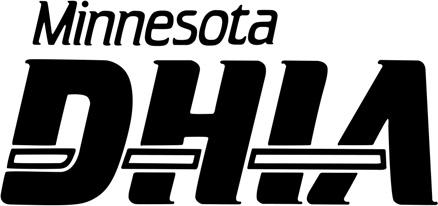














Editor’s note: Dairy Star aims to provide our readers with a closer look into relevant topics to today’s dairy industry. Through this series, we intend to examine and educate on a variety of topics. If you have an idea for a topic to explore in a future issue, send Stacey an email.
MISHICOT, Wis. — When Steven Rahmlow received too many complaints for using an airplane to spray fungicide on his corn, he decided to use a drone instead.
acres, growing soybeans, winter wheat, alfalfa and corn, at Cedar Springs Dairy Farm near Mishicot.
“We always used an airplane to spray our corn,” Rahmlow said. “When people see planes ying around, it throws up a huge red ag, and you get complaints.”
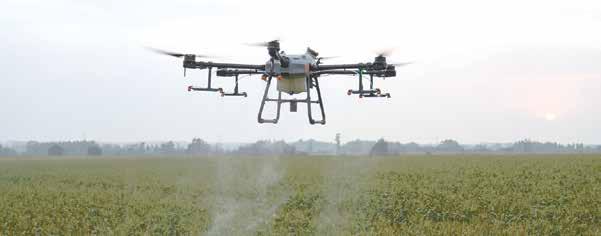


“I absolutely loved it,” Rahmlow said. “The drone gets a lot closer and provides a lot better coverage than a plane.”
Rahmlow and his family milk 1,150 cows and farm 4,000
Rahmlow is going on his third year of hiring a drone operator to spray the fungicide. After spraying elds by drone the rst year, Rahmlow needed 1,674 acres sprayed the following year, and he had the drone applicator do it all.
“The drone is a lot smaller, and no one sees it,” Rahmlow said. “People don’t know there is someone out there spraying. We had zero complaints.”
When the need to spray a crop or plant cover crop seed arises, dairy farmers can turn to

drones to get the job done. They use drones to control insects, weeds and fungus, and to deliver nutrients to crops and seed for cover crops. Farmers might also use smaller camera drones to inspect elds and check crop health.
From cover crop aerial seeding and herbicide and fungicide application to doing test plots and crop scouting, drones have many uses in agriculture.
“A drone is such an awesome tool for someone with a growing operation,” said Jeramy
Williams, owner of American Drone. “Drones offer the benet of traditional aerial applicators but put the control in your hands. If you own the aircraft, you can do this yourself whenever you want. You don’t have to wait on a xed wing or have a lot of acres to justify one coming into your area.”
A drone can get onto a eld even when it is wet, ensuring timely application without leaving any evidence that it was there. When the ground is soft in spring, a ground applicator
can make ruts in the eld or get stuck, Williams said.
“You’re going to run over 3 bushels per acre just by driving the machine out there,” he said. “You are losing yield by pounding corn or soybean into the ground.”
American Drone provides liquid and dry aerial applications. It also runs a full-service dealership near Marsheld.

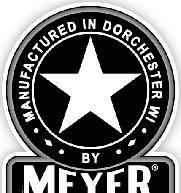


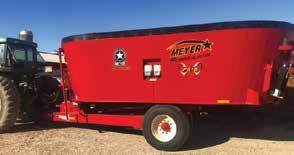


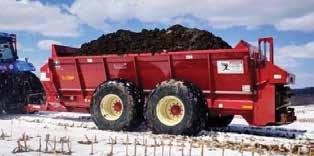


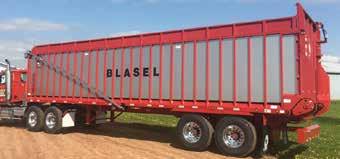

“We help them through the whole process, including all the legalities and regulations,” Williams said. “We train people and make sure they are safe, legal and condent in using drones. We are the only dealer of agricultural drones in Wisconsin that is also a custom applicator. We work with and service the two largest and most advanced drone brands: DJI and XAG.”
A drone can enter a eld at any stage in the plant’s life. Drones can also access hard-to-reach places like waterways, terraces, fence rows and tree lines. They can be used with success on rough, rocky or steep terrain and do applications near congested areas. When using a drone, the application stays on-site without drifting. In addition, drones target only those areas of a eld that require spraying.
set up with a drone applicator if they wish to go that route.
“Most of the dairy farmers I work with are using drones to apply fungicide on corn silage,” Verhulst said.
Verhulst said it is mainly bigger farms using a drone on their brown mid-rib corn silage, about 5%-10% of his clientele. As a service to his customers who buy fungicide from him, Verhulst lines up the drone application and ensures the farmer has the maps, water and other supplies needed for the operator.

“With a drone, you can be very specic about where you spray,” Williams said. “If you have a 100-acre eld with only 10 acres of weeds, you don’t need to put 100 acres’ worth of product out there. The precision inside of these drones allows them to be very accurate.”
Brooke Stewart, owner of AgriDrone LLC, is a custom applicator, certied crop adviser and agronomist. Operating out of Luxemburg, Stewart specializes in chemical and cover crop applications using a drone. She performs liquid and dry aerial applications, applying fungicide on corn, soybeans, winter wheat and alfalfa as well as planting cover crop seed.
“There are still quite a few farms with their own sprayer or they have the co-op do it,” Verhulst said. “If they don’t have their own sprayer, I recommend using a drone on the corn silage. I can help get the drone set up so the timing is correct. Timing is really critical for fungicide, and we can get the timing at the right stage with the drone.”
Rahmlow applies fungicide to prevent tar spots.
“We didn’t put it on one eld, and it was almost 30 bushels of a difference,” he said. “The plant died a lot sooner that year, and we lost tonnage.”
Rahmlow is considering trying the drone with soybeans this year.





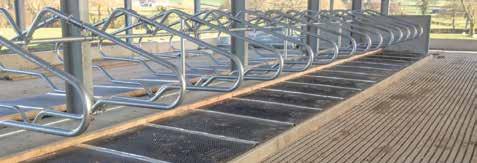

“Pretty much anything you spray in agriculture can be done with a drone,” Stewart said. “From eld and vegetable crops to orchards, vineyards and forestry — all these industries can utilize drones.”
The drone ies 10 feet above the crop canopy with a swath of 30 feet at a rate of 25 acres per hour. Stewart said the cost for an application is about $20 per acre for an average-size eld.
“For a farm with a lot of small elds or higher rates of application, I would charge an hourly rate,” Stewart said.
Stewart sprays at a rate of 2 gallons per acre.
“That’s a typical rate we use to be efcient with the drone,” she said. “You can cover 25-40 acres per hour, depending on the type of drone you have.”
“We’re also thinking about getting our own drone in the future,” he said. “If I had a drone, I would maybe spread more cover crops instead of running equipment over the eld.”
Rahmlow said the only drawback of a drone is that it takes longer than an airplane.
“Airplanes are a little faster, but I’m getting better coverage with the drone, and the cost is about the same,” he said.
If a farmer is interested in purchasing a drone, Williams recommends working with a supplier that is also an applicator.
“Talk to a supplier who can work with you as a partner, train you and walk you through the process,” he said. “Make sure you’re not just buying a drone because they’re new and cool. … You need to be making that capital equipment purchase for a reason.”

Stewart ies a DJI Agras T30, which has a 30-liter tank or about 8-gallon payload capacity, which is equivalent to 50 pounds of seed or granular.
When planting cover crops, Stewart plants a winter rye mixture, clovers, brassicas and turnips at a rate of anywhere from 5-30 pounds per acre.
Last year, American Drone spread over 26,000 pounds of cover crop seed.
“Spreading cover crop seeds into standing corn that’s 8 feet tall can be done easily with a drone,” Williams said. “By the time you cut the corn, the cover crop is germinating already.”
Williams also applies foliar feed to crops via drone.
“Instead of dumping hundreds of pounds of nitrogen on the crop at once, the drone spoon feeds foliar feed to the crop 3-4 times throughout the plant’s life cycle,” he said. “It lands on the leaves, and the plant takes it in. People are seeing a big bump in yield from that.”
Williams also recommends using drones to spray pastures.
“If you have a pasture that’s hilly, rocky and full of thistles, and you want to take out the thistles, drones are awesome for that,” he said.
Williams said the investment for a drone, including training and all associated equipment, is about $60,000.
“The average return on investment is only 17 spray days or application days,” Williams said. “I’ve had many customers prove that.”
Many licenses are required to y a drone. These include Federal Aviation Administration Part 107 to y a basic drone, FAA Part 137 to operate a drone more than 55 pounds, a state aerial applicator license, a state chemical applicator license and a third class medical certicate.
Stewart said the operator must maintain a visual line of sight of the drone and avoid power lines, wood lines and other obstacles. A short battery life can be a drawback as batteries typically last 6-8 minutes or 4-5 acres.
Drones are proving benecial in helping farmers manage their crops, and Stewart said the demand for drone work is high.
“There are new crews and people getting into it this year,” she said. “It’s really taking off.”
Williams said American Drone is adding more capacity to the industry by setting up dealerships.
“A drone is an amazing tool, but you have to be able to use it legally, safely and effectively,” Williams said. “There are a lot of federal and state regulations to follow, and civil aviation safety is our top priority. We want to make sure that when people y these in the national airspace system, they’re doing it safely.”


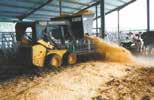






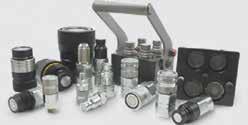



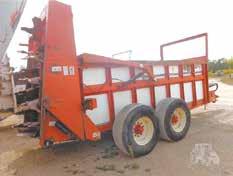
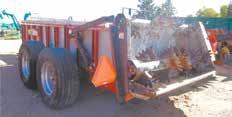










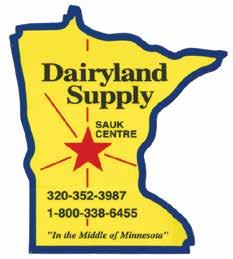






When did you get started with spring fieldwork?
Neil Jaschen Tripoli, Iowa Bremer County 400cows

When will you get started with spring eldwork? Some of my neighbors started planting last weekend. We hope to start chopping winter rye silage the rst or second week of May. Then, we will apply liquid manure followed by no-till planting corn for silage.
What crops do you raise, and how many acres of each do you have? We raise 270 acres of silage corn, 230 acres of winter rye and 90 acres of established alfalfa. We harvest 100 acres of reed canary grass for dry cows and heifers.
How have planting decisions changed for you? We are doing more double cropping, winter rye and corn. We get more forage per acre that way. We notill the corn and rye, and that saves us a little time in the spring and fall.
What spring planting rules do you typically follow? We have no specic rules other than watching the calendar, weather and soil conditions.
What is the highlight of spring eldwork? Windrowing winter rye and chopping are my favorite eldwork in the spring.
What do you enjoy doing in your spare time in the spring? In my spare time, I do yard work, building maintenance and enjoy playing with the grandkids.
Tell us about your farm and your plans for the dairy this year. I have no specic plans for the dairy. My wife, Nancy, and I milk 400 cows in our 200-stall tiestall and freestall barns. Our youngest son, Nicholas, and his wife, Lexie, have a tanker and semi that they use to haul our milk to Associated Milk Producers Inc. They also help us in their spare time.


 Jeff TeKrony Castlewood, South Dakota Hamlin County 500 cows
Jeff TeKrony Castlewood, South Dakota Hamlin County 500 cows

When did you get started with spring eldwork? We planted our oats and alfalfa April 9. Depending on eld conditions, we might get started with corn and soybeans in the last week of April.
What crops do you raise, and how many acres of each do you have? We raise 500 acres of alfalfa, 100 acres of oats, 600 acres of corn, 200 acres of sorghum and 200 acres of soybeans. This hasn’t changed in recent years.
How have planting decisions changed for you? We haven’t made any changes in our planting decisions. After a couple of dry years, we are focused on rebuilding our feed inventory. Our corn silage yields were down 25% last year.
What spring planting rules do you typically follow? This changes from year to year. We plant our small grains as early as possible. We generally don’t start planting corn or soybeans until the last week of April at the earliest.
What is the highlight of spring eldwork? Watching someone else pick rocks. Also, knowing that the weather will continue to get better.
What do you enjoy doing in your spare time in the spring? I enjoy working on our eld equipment and getting it ready to go.
Tell us about your farm and your plans for the dairy this year. I farm with my wife, Kim, along with my sister, April Brouwer, and her husband, Jared. We milk 500 cows and sell our milk to Valley Queen Cheese in Milbank, South Dakota. We have ve employees who help us with the milking and keeping the barn clean. We raise our own replacement animals and feed out all of our steers.
cows
When will you get started with spring eldwork? We will get started when the eld is not muddy. We will have to wait and see.
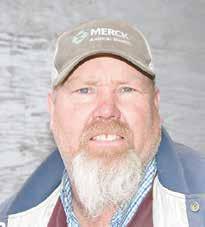
What crops do you raise, and how many acres of each do you have? We raise 750 acres of corn, 370 acres of existing alfalfa, 30 acres of new-seeding alfalfa under-seeded with barley and 100 acres of soybeans. We farm 1,200 acres total.
How have planting decisions changed for you? Using a stronger insecticide for rootworm issues. This is our rst year with a new product. We’ll see if there’s a benet.
What spring planting rules do you typically follow? With limited opportunity, as soon as the elds are dry enough and no freezing is predicted long term, we go for it.
What is the highlight of spring eldwork? The smell of freshly turned soil and the opportunity to plant another year.
What do you enjoy doing in your spare time in the spring? Spending time with my wife and two boys, and completing home projects together.
Tell us about your farm and your plans for the dairy this year. I farm with my brothers, Ken and Don. We milk in a double-12 parallel parlor. Our milk is shipped to First District Association in Litcheld, Minnesota. Cows are housed in crossor tunnel-ventilated freestall barns. We employ six full-time and ve part-time workers. We raise our heifers on-site and feed out steers and cross-bred heifers as well.




Tony Schwalbe Avon, Minnesota
Stearns County
120 cows
When did you get started with spring eldwork? On April 5, we planted our oat and alfalfa mix. We planted 31 acres. Then, we nished hauling our liquid manure April 19. By May 1, we are going to be planting corn, if not earlier.
What crops do you raise, and how many acres of each do you have? We don’t plant anything else besides corn, oats and alfalfa. We have about 450 acres. Nothing has changed in recent years.
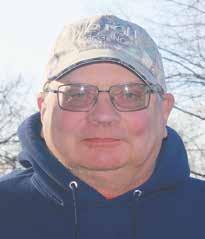
How have planting decisions changed for you? The planting decisions are always the same for the most part, but people say the ground should be 70 degrees for corn. It seems like some guys have had luck with planting and it getting snowed on, so we aren’t too worried if the ground isn’t quite there when we plant. The alfalfa goes for three years, maybe four. The oats are just a cover crop with the alfalfa, so rotation is only between alfalfa and corn.
What spring planting rules do you typically follow? It’s pretty much the weather and keeping up with the technology we can afford. We plant 14 pounds of alfalfa per acre. For corn, I’ve been going 2.5 inches for a planting depth. This year, I’m going to try going a little shallower.
What is the highlight of spring eldwork? When the days are 65 degrees with no humidity, it’s nice to be in the eld. It’s pretty exciting getting the crops in the ground. Planting is my favorite part of spring eldwork.
What do you enjoy doing in your spare time in the spring? We were just out turkey hunting the last couple of days. That’s always fun to do. Pretty soon I will get out shing as well.
Tell us about your farm and your plans for the dairy this year. We are hoping to get a new system for raking hay. We milk 120 cows with two robotic milking units and ship our milk to Land O’Lakes Inc. in the Twin Cities. My wife, Nancy, and I farm with my brother, George, and his wife, Jenny, as well as their two sons, Kevin and Eli. George has been farming all his life. I started in 2006.
Ron Pagel Eyota, MinnesotaOlmsted County
130 cows
When did you get started with spring eldwork? We seeded oats March 12-13. They are about 4-5 inches tall right now.
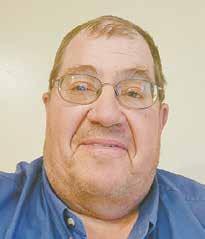
What crops do you raise, and how many acres of each do you have? We raise 65 acres of food-grade oats, 110 acres of corn, 30 acres of soybeans and 100 acres of alfalfa. We have been growing oats for three years. It has worked well in our operation. We use the straw for feed, and we no till the alfalfa in the fall. In the oat acres, we don’t seed down to alfalfa. It allows us to seed down a second crop for additional forage. With the drought last year, we used a lot of excess forage inventory, so we need to rebuild our inventory. We are raising more alfalfa and corn, which will all go to silage. We can buy our grain for our cows cheaper than we can grow it. We usually put up corn silage and earlage, but last year, with the drought, we put it all up as silage.
How have planting decisions changed for you? We have been pretty much no till for eight years. We grow a lot of cover crops. We use some of those acres for

When did you get started with spring eldwork? We planted wheat April 6 and soybeans April 14-15. We thought we would experiment with beans since it was early.
What crops do you raise, and how many acres of each do you have?
We have 80 acres of spring wheat, 225 acres of alfalfa, 500 acres of corn and 500 acres of soybeans. We are a little bit more soybean heavy this year because of how the rotations worked out.

How have planting decisions changed for you? The weather forecast is a little better these days with knowing how much rain is coming and whether we should or shouldn’t plant since we can look out two weeks more condently.
What spring planting rules do you typically follow? Everything is based on if the eld is t and the soil and air are a little warm. If it is, we are going.
What is the highlight of spring eldwork? Watching the crops emerge after you put all the work into it. Once it’s up, you feel like you can sleep at night, because it’s out of the ground and you can visually see it.
What do you enjoy doing in your spare time in the spring? Having a bonre with the family and sitting around eating supper enjoying the moonlight.
Tell us about your farm and your plans for the dairy this year. The farm is owned by my mom, Janet, my brother, Chris, and myself. We ship our milk to First District Association. We milk in a double-10 parlor and nish all our steers. We don’t have any plans besides to keep going. My wife, Lisa, and our kids, Lydia, Madelynn, Kellen and Sylvia, are also active on the farm.
forage. Some of our corn has to wait until we remove the winter rye, and then we no till right into it behind the baler. We make baleage out of the winter rye.
What spring planting rules do you typically follow? I’m a rm believer in having patience to wait until the conditions are right. So, when I put the seed in the ground, it comes up. I don’t wait a month or six weeks fretting about germination. Part of that is driven by the fact that if we are waiting to pull cover crops off for feed, we can’t plant it yet anyway. Three years ago, we had corn emerge in four days. It was a gorgeous stand and tremendous yields, and that goes to show if you have moisture, heat and the right conditions, it’s up and going.
What is the highlight of spring eldwork? Seeing stuff grow, things greening up and the smell of fresh hay.
What do you enjoy doing in your spare time in the spring? Getting equipment ready and playing with the grandkids.
Tell us about your farm and your plans for the dairy this year. I farm with my wife, Lori, our two sons, Jeff and Tim, and their spouses. We milk in a double-8 parallel parlor. We use loose housing and compost barn for housing. We raise our heifers. We ship our milk through Land O’Lakes Inc. On the farm, there’s always things to x. We need to upgrade some stuff with our calf and heifer raising facilities. That’s probably the No. 1 on our to-do list. We are hoping for a better milk price.



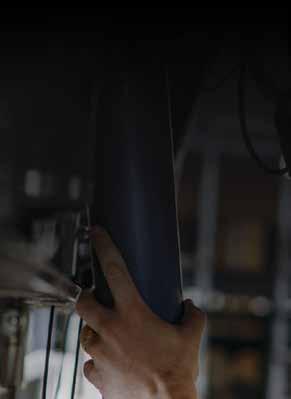























How many times a day do you milk, and what is your current herd average, butterfat and protein? We milk three times a day with a yearly rolling herd average of 33,839 pounds. Our butterfat is 4.4% and our protein is 3.1%.
Describe your housing and milking facility. Cows are housed in a 4-row freestall barn with sand bedding, fans, sprinkler systems for the summer and long-day lighting for the winter. Our double-8 parallel BouMatic parlor is in the retrotted stanchion barn. Our calves are raised in calf barns with automatic feeders.
Who is part of your farm team, and what are their roles? I manage all aspects of the farm with the help of feeder Jeff Troester, herdsman Dan Busch and four parlor employees.
What is your herd health program? A healthy herd begins with the calves. We vaccinate the calves with Inforce 3, C&D Antitoxin and First Defense at birth. At weaning, they are given Inforce 3. At 4 months, the calves receive the Bangs vaccine for brucellosis, BoviShield Gold and Ultrabac 7. At 5 months, they get Bovi-Shield Gold and Ultrabac 7. At 3.5 and 4.5 months of age, the calves get a pink eye vaccine. Heifers are given Bovi-Shield Gold and
Tom Kunkel

Dairy nutri onist Roger Hoppenjan (le ) and dairy farmer Tom Kunkel take a break April 17 at T Kunkel Dairy LLC near Cuba City, Wisconsin. Kunkel milks 250 cows and farms 550 acres in Grant County.
cess to pasture. Their ration is corn silage, rough hay and mineral. Thirty days before calving, they go to a pre-fresh pen. The pre-fresh ration is wheat straw, corn silage and a dry-cow concentrate that includes mineral. They are moved to a bedded pack one week prior to calving. Fresh cows are integrated with the rest of the herd shortly after calving.
What is the composition of your ration, and how has that changed in recent years? The milk cow ration consists of corn silage with 17 pounds of dry matter, two types of haylage that contribute 20.4 pounds of dry matter, nely ground highmoisture shell corn for 12.41 pounds of dry matter and protein that counts for 11.08 pounds of dry matter. As-fed pounds equal 123.25 with a dry matter weight of 61 pounds. We try not to make changes. We have a good base program that we make small tweaks to. Sometimes corn silage uctuates with the seasons or inventory, but the variation is in small amounts.
Tell us about the forages you plant and detail your harvest strategies. For alfalfa, we grow HarvXtra, which is a high-qual-
What does your dry cow and transition program consist of? The dry period is 60 days. They are housed in a freestall barn, and in the summer, they get ac-
Ultrabac 7 semi-annually. When bred heifers go to pasture, they receive LongRange, an extended release injectable parasiticide. Pre-fresh heifers get ScourGuard and J-5 at 65 days before calving and ScourGuard again six weeks pre-fresh and J-5 again 21 days pre-fresh. Mature cows receive Bovi-Shield Gold semi-annually. J-5 is administered 21 days pre-fresh and at fresh check. Dry cows are given ScourGuard and Ultrabac 7 at their dry check with the veterinarian. Two weeks after the dry check, they are given Vaxxon SRP Salmonella and Vaxxon SRP Klebsiella. At dry off, 60 days pre-fresh, the mature cows are given J-5 and ScourGuard.
Turn to TOP PERFORMERS








Mastitis is the most common and costly disease in the dairy industry. Veterinarians know that the liner when milking doesn’t totally close in the rest phase. This causes a large percent of mastitis in cows. With the liner open, Pre-dip doesn’t stop bacteria when being forced up the open teats in the rest phase. Mastitis shortens the life of the cow. TridentPulsation™ (winner of an ASABE award) is the only system that totally closes the liner in the rest phase when milking a cow. This stops bacteria being forced up the teats which causes a large percent of mastitis in dairy cows!



Which of these liners is your mastitis creator? Round, square, triangle…




“...the one that keeps quality milk in the tank.”
— Laura Rasmussen
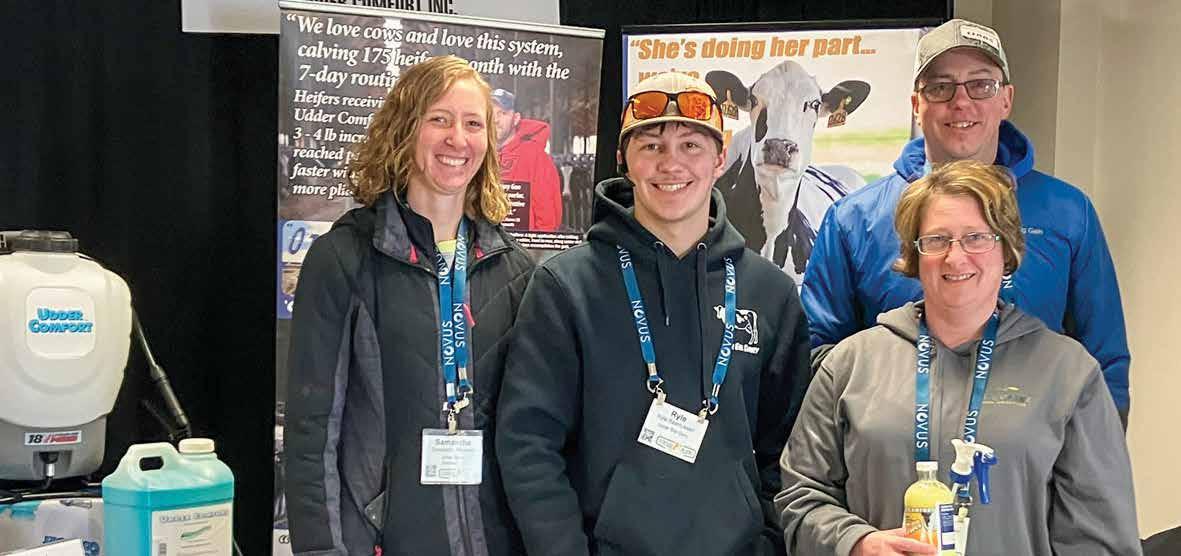

“We got a sample of Udder Comfort™ at the Dairy Expo over a decade ago and have relied on it ever since,” say Corey and Laura Rasmussen. The family operates their 350-cow Udder Site Dairy near Harlan, Iowa.
“We see a response by the next milking with Udder Comfort. It’s a key part of managing healthy udders and quality milk, along with attention to details in nutrition, milking process, and cow comfort and cleanliness with sand-bedded freestalls,” says Corey.
“Udder Comfort is the one that takes swelling out of the udder and keeps quality milk in the tank,” says Laura as she visited our booth at Central Plains Dairy Expo in March, noting the key is to apply Udder Comfort consistently at the start of lactation.
“We apply Udder Comfort after each milking for 4 days on all fresh cows as well as for any type of edema, flakes or hardness. We find we just don’t need intra-mammary mastitis treatments anymore,” they explain.






















JD 2680H 2021, 35 ft., 3-Section Folding, #579164 ............................... $139,900
JD 2623 2014, 37 ft., 5-Section Folding, 9” Spacing, #579549 .................. $39,900
JD 2680H 2021, 35 ft., 3-Section Folding, #580308 ................................. $94,900 DRAWN PLANTERS
JD 1775NT 2022, 24 Row, 30” Spacing, #549842 ................................... $389,900
JD DB60 2013, 24 Row, 30” Spacing, #550243 ....................................... $149,900
JD DB60 2019, 24 Row, 30” Spacing, #551039 ....................................... $299,900
JD DB66 2011, 36 Row, 22” Spacing, #556901 ....................................... $195,900
JD DB60 2018, 24 Row, 30” Spacing, #562192 ....................................... $249,900
JD 1775NT 2023, 24 Row, 30” Spacing, #566196 ................................... $369,900
JD 1760 2008, 12 Row, 30” Spacing, #568124 .......................................... $29,500

JD DB60 2020, 24 Row, 30” Spacing, #569113 ....................................... $349,900
Case IH 2150 2021, 16 Row, 30” Spacing, #569307 ............................... $199,900
JD DB60 2010, 24 Row, 30” Spacing, #569759 ....................................... $151,500
JD 1775 2018, 12 Row, 30” Spacing, #570817 ........................................ $108,000
JD 1770NT CCS 2013, 24 Row, 30” Spacing, #571367 ............................ $109,900
JD DB80 2012, 32 Row, 30” Spacing, #571885 ....................................... $232,900
JD DB66 2019, 36 Row, 22” Spacing, #572188 ....................................... $379,900
JD 1795 2023, 24 Row, 20” Spacing, #573347 ........................................ $419,900
JD DB60 2018, 24 Row, 30” Spacing, #573437 ....................................... $289,900
JD 1775 2022, 12 Row, 30” Spacing, #574581 ........................................ $139,000
JD 1770NT CCS 2008, 24 Row, 30” Spacing, #574675 .............................. $89,900
JD DB60 2017, 24 Row, 30” Spacing, #574768 ....................................... $315,000






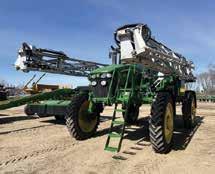
JD DB66 2023, 36 Row, 22” Spacing, #574902 ....................................... $532,900
JD DB66 2022, 36 Row, 22” Spacing, #576258 ....................................... $479,000
JD 1770NT CCS 2009, 16 Row, 30” Spacing, #576764 ............................ $133,500
JD DB66 2003, 36 Row, 22” Spacing, #577083 ......................................... $63,500
JD 1775NT 2015, 24 Row, 30” Spacing, #577213 ................................... $159,900
Kinze 3500 2016, 8 Row, 30” Spacing, #578235 ...................................... $59,900
JD DB66 2011, 36 Row, 22” Spacing, #578691 ....................................... $182,000
JD 1775 2022, 12 Row, 30” Spacing, #578705 ........................................ $142,500
JD 1775 2019, 12 Row, 30” Spacing, #578706 .......................................... $99,900
JD DB60 2013, 24 Row, 30” Spacing, #578708 ....................................... $139,900
JD 1770 2001, 12 Row, 30” Spacing, #578830 .......................................... $29,900
JD 1775NT 2020, 24 Row, 30” Spacing, #579102 ................................... $297,900
JD 1775NT 2021, 12 Row, 30” Spacing, #579443 ................................... $215,000
JD 1760 1996, 12 Row, 30” Spacing, #579729 .......................................... $25,900
JD 1790 2003, 16/31 Row, 15/30” Spacing, #579847 ............................... $58,500
JD 1775NT 2023, 16 Row, 30” Spacing, #579850 ................................... $254,000
JD 1775NT 2023, 16 Row, 30” Spacing, #579851 ................................... $305,000
JD 1760 2011, 12 Row, 30” Spacing, #579953 .......................................... $44,900
JD 1725 CCS 2023, 16 Row, 30” Spacing, #564619 ................................. $184,900
Moore Built 24R22 2000, 24 Row, 22” Spacing, #566760 ....................... $25,000
JD 1720 2004, 16 Row, 30” Spacing, #567177 .......................................... $37,000

JD 1720 CCS 2019, 12 Row, 30” Spacing, #569017 ................................... $89,900
JD 1720 CCS 2019, 12 Row, 30” Spacing, #569018 ................................... $79,900
JD 1720 2005,





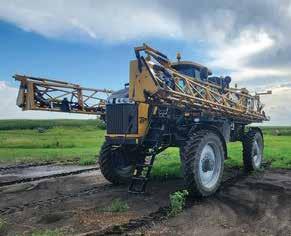







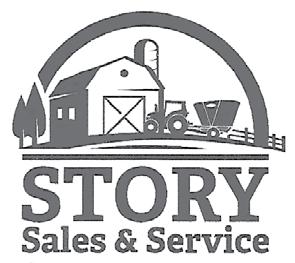
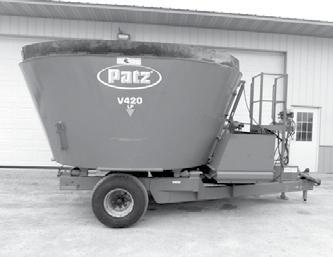
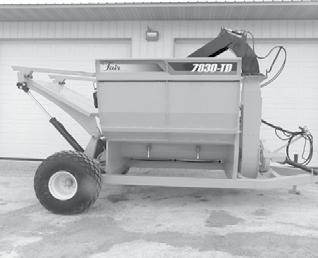

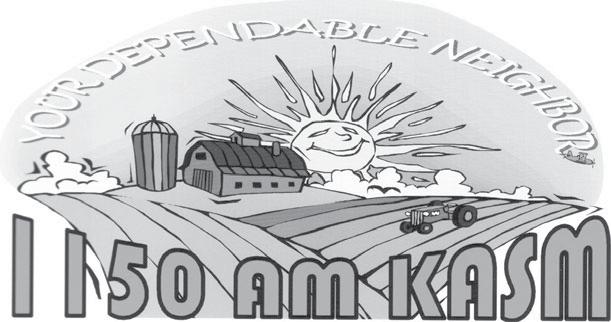



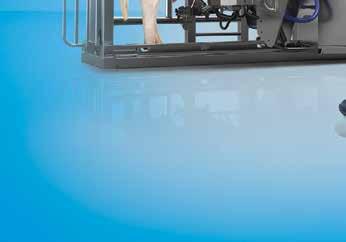
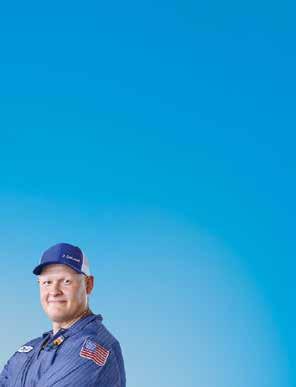




Loran and Heidi Sellner, who are active with many community programs, were recognized for their work by being named the 2023 Brown County Farm Family of the Year.
Each year, the University of Minnesota Farm Family Recognition Program honors families from across the state for contributions to their communities and the agriculture industry. The families are recognized each August during Farmfest.
“There are many deserving families in Brown County,” Heidi said.
The couple is and has been involved in organizations ranging from the American Dairy Association, 4-H, FFA, sports, coaching and Minnesota Dairy Initiative all
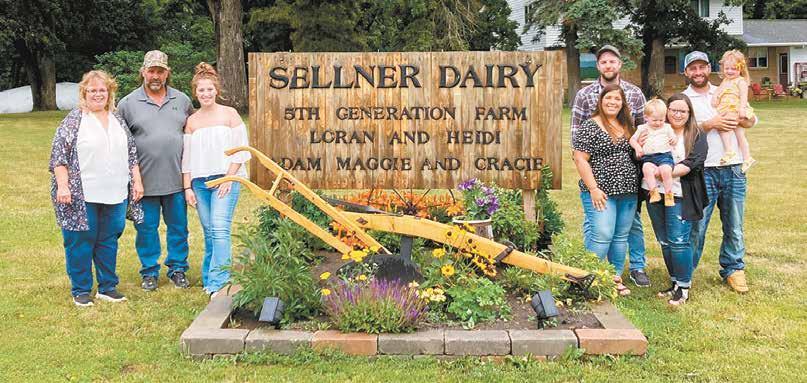
while managing their dairy farm near Sleepy Eye.
They have help from two employees to raise more than 240 acres of corn, soybeans and hay.
One of the main organizations Heidi is involved with is MDI.
“I love it,” Heidi said. “I’ve been a coordinator for


20 years now, and I get to work directly with farm families and help them nd a plan to achieve their goals.”
Heidi looks at records, brings in the farm’s key people to discuss the future and nds grants as well as offfarm experts to help move the farm forward.
She meets with the farm-
ers as often as they like, from monthly to biannually. Each meeting averages 1-2 hours. Covering southwest Minnesota, Heidi’s travel ranges from 10 minutes to two hours.
Loran is equally involved.
Recently, he was elected to the Springeld Co-op Creamery board. When their children, Adam, Maggie and
Gracie, were younger, he was a baseball coach. Together, the couple served on the ADA board. Heidi also served on the state dairy princess board and was active in 4-H with their children.


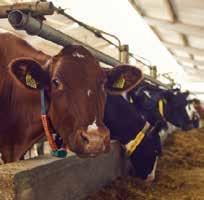






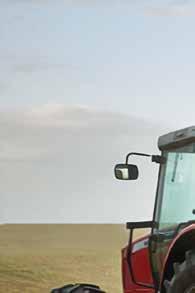
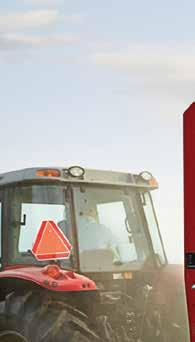





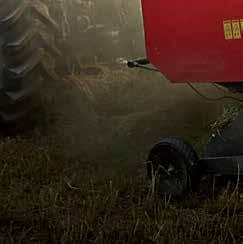




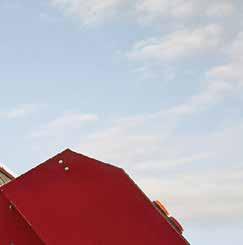
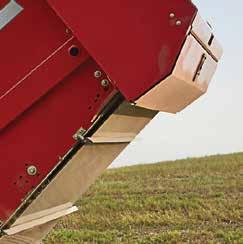
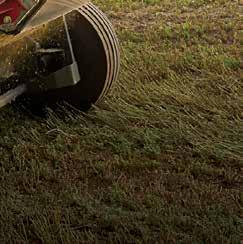

Achieving the pinnacle of efficiency with hay is now available at 0% financing for 48 months with a Hesston by Massey Ferguson® 2956 A round baler from Ziegler Ag Equipment. Purchase now through May 31, 2024, and get 10 free rolls of advanced net wrap with your Hesston® baler. Better bales are out there with the know-how and experience of Hesston. Lock in this offer now at your closest Ziegler Ag Equipment branch.







Their grown children return to the farm when needed and able. Their youngest, Gracie, is in her rst year of college at South Dakota State University, majoring in agricultural education and minoring in agricultural business.
“I helped on every committee with 4-H except the food stand,” Heidi said. “Our kids were involved in 4-H, FFA, sports, (including) summer sports at St. Mary’s (Catholic) School in Sleepy Eye.”
While being active in the community, the family never aimed to be in the spotlight. When they were rst named as a farm family, they said it was adjustment to be front and center.
“It was a change, but everything on the farm changes,” Loran said. “You have to adapt to it. It was a little more running around than we were used to but was a nice honor. There are other families that are just as deserving.”
The Sellners milk 200 Holsteins with three robotic milking units and ship milk to First District Association. Heifers are raised off the farm.
“I could never remember numbers, so all my cows got names,” Loran said. “Since we got the robots, everything is calm and gentle.”
Loran took the farm over from his parents in the 1980s. He uses A.I. and genomic

testing and tests for production and pregnancy through the Dairy Herd Improvement Association.
“(Genomic testing) is a nice tool to have,” Heidi said. “It can improve your herd quickly, and everything is right on your phone and computer.”
Loran is the fth generation on the farm. It was his mother’s family’s homestead, established in 1858.
“Adam is interested in coming back, but he is more interested in the crops and maybe diversifying the farm,” Heidi said.
They are hoping to make a slow generation change and pass more responsibility to Adam.
“You can’t take giant leaps,” Loran said. “It’s a generational farm. My life is here on the farm, and I like working with the cattle. There’s always something to do, and we are at the size we feel comfortable with.”
The family values the time they spent raising their family on the farm.
“You get all of life’s challenges you have to deal with; it teaches a kid everything,” Loran said.













Brad Herickhoff, Owner
320-351-4872


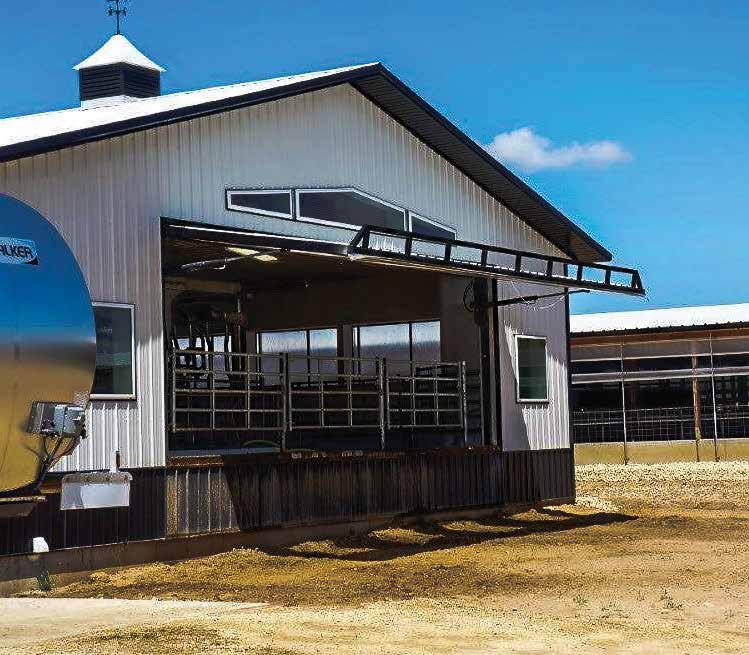
— Attendees at the Central Plains Dairy Expo March 20 took in a presentation called “Milking Their Way,” which featured three dairy farms from Iowa and Texas. All use DeLaval systems but manage their herds differently.
Richard Franta is the solution sales specialist for DeLaval North America and served as moderator for the panel.
“When we see people updating and changing their facilities, we see a lot of debate over how that family should decide what’s best for them,” Franta said. “There’s a real decision between how to manage the cows and how to manage the labor and everybody likes to do it a little differently.”
Franta was joined by producers Sam Schwartz of Rolinda Acres near Waterville,
Iowa, Aaron Titterington of Jones Family Farm near Spencer, Iowa, and Dr. Juan Velez, representing Ranch Pepper Dairy, near Dublin, Texas.
Schwartz’s farm consists of 950 cows that are milked with a double-12 parlor and 11 DeLaval VMS V300 robotic milking units. The parlor handles approximately 250 cows while the robots handle the remaining 700.
The robotic barn is designed with access to all 11 robots from a centralized room. There are three pens with three robots in each, with each robot accommodating 60 cows. This allows the cows in those pens to be milked three times a day. The fourth pen has two robots that hold 90 cows.
Schwartz said the robots perform well under the conditions.
“We couldn’t add a third robot in our fourth pen, so we run 90 cows per robot,” Schwartz said. “They hold about two-times-a-day milk-

ing and get 75 pounds per cow.”
To begin their lactation, 2-year-olds are milked in the parlor. They are milked here for about three weeks while
they recover from calving. Mature cows are moved to the robot right away.
Because the farm uses a guided-ow system, putting fresh cows with the robots too
early does not work for them, Schwartz said.
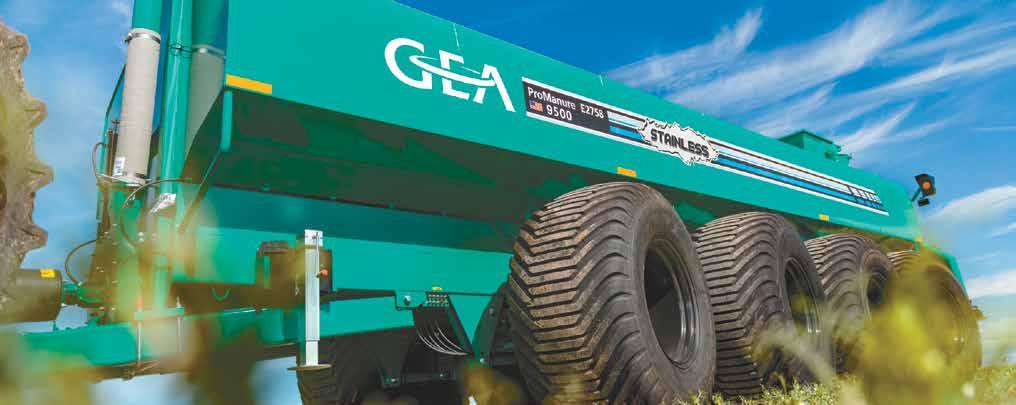



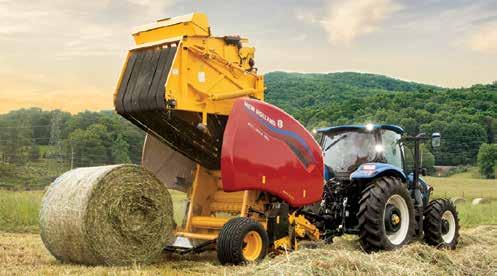
“If you do put them through a guided-ow system, make darn sure that you keep feed in front of them and keep them out of holding areas,” Schwartz said. “It’s why I like having that parlor.”
Schwartz said that putting a training robot in with heifers has made the transition easier. They can go through a basic robot box that only feeds them pellets.
“Anyone that tours our barn, I tell them to put in a training robot,” Schwartz said. “It’s the cheapest thing you’ll ever do, and it pays dividends.”
When the Titterington family of Jones Dairy was preparing for an upgrade, they considered robots for about six months. When they realized all the management changes they would have to make and the true cost of robots, they opted to upgrade to a 64-stall rotary milking parlor. They determined that the parlor route would also allow more room for growth in the future.
“The more we talked about it, it was a really easy decision after all those months,” Titterington said. “It took a couple of weeks, and it fell into place.”
Titterington’s family milks 1,800 Jerseys with a DeLaval rotary parlor installed in March 2023.
The family built a tunnel-ventilated barn at the same time and used the original facilities to house dry cows and heifers. Titterington said they like the tunnel-ventilated system. With automatic scrapers and a manureseparating system, they can bed all the cows and heifers with the recycled ber from the newest barn.
Cows were milked in a double-12 parlor before the rotary upgrade. All the shift workers remained through the transition. Milking times have been cut by almost half. This allows the workers to spend more time caring for youngstock.
“We’re doing a better job in some
of those areas, because we are milking cows more efciently and have more time,” Titterington said.
The sort gate at the parlor exit directs cows to an area with headlocks, where they can be tended for herd health.
Rancho Pepper Dairy in Texas combines the concepts of parlors and robots with the use of batch milking. In this design, the cows are not given free access to the robots. Instead, the cows are brought to the robots in groups, or batches, and put in a holding area. Here, they work through 22 robots arranged in a double-11 parallel layout. This setup allows eight employees to manage 2,100 cows.
The cows are grass-fed and milked twice per day. They average 45 pounds of milk per cow per day. The decision to install robots was made due to a labor shortage and the desire to remain an organic, grazing herd.
“The combination of grazing more than one group of animals was one of the main drivers of us moving to batch milking,” Velez said. “The decision to go with robotic versus rotary was made due to the difculty of nding labor for milking cows in that part of the country nowadays.”
Two people manage the farm during the day, two manage it at night and two are relief milkers. For each shift, a cow mover keeps the robots clean, changes lters when needed, closes gates and observes cow behavior. The other person administers vaccinations, dries cows and takes care of cows that have been sorted after milking.
Verez said the parallel robotic system gives him the perfect blend of management.
“I really like the concept of managing the work on the cows in a rotary parlor with one herdsman doing the breeding and the vaccination in one exit lane,” Velez said. “And I like the idea of voluntary milking. To me, this is a combination of the best worlds.”

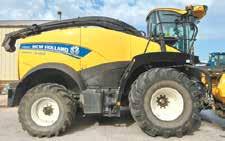
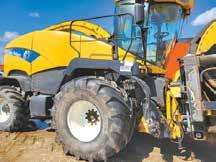
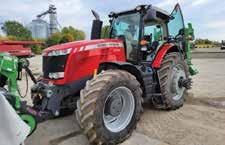
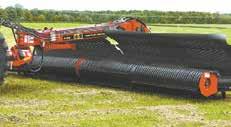

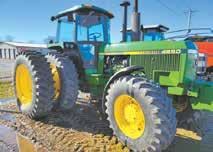
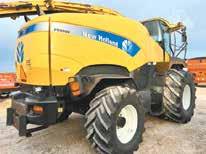





















































































Kohl, Tranel, Hall present during eld day in Sioux Center
By Jerry Nelson jerry.n@dairystar.comSIOUX CENTER, Iowa — Iowa State University Extension and Outreach held a series of heifer eld days across the state in March.
The eld days took place March 26 in Kalona, March 27 in Postville and March 28 at the Dordt University Agriculture Stewardship Center near Sioux Center.
Presenters at the Sioux Center event included Dr. Larry Tranel, ISU Extension and Outreach dairy eld specialist; Kris Kohl, ISU eld agricultural engineer for northwestern Iowa; and Fred Hall, ISU Extension and Outreach dairy specialist.
tion.
“That is real money even with today’s milk prices,” Hall said. “One way or the other, you will pay for air quality. If you have a naturally ventilated calf facility, you will want the sidewall curtains to be at least halfway open in the spring, summer and fall.”
The Midwest is known for its unrelenting winds. This is something that producers can use to their advantage, Kohl said.
“A 10 mph wind is moving air at 880 feet per minute,” Kohl said. “This means that 1 square foot of opening can provide enough ventilation for up to 40 baby calves. One part of fresh air will entrain nine parts of room air. When it’s above 60 degrees, the goal is to actually create a windchill on the calves.”

Tranel talked about facility design and management for housing calves.
“Up until 2 weeks, baby calves do best in an environment that is between 50 and 78 degrees Fahrenheit,” Tranel said. “After that, they can tolerate temperatures between 32 and 78 degrees. Humans prefer temperatures that are between 72 and 86 degrees.”
Tranel stressed that it is important to keep calves dry and comfortable.
“You don’t want calves to have an environment that is dark, damp and dingy,” Tranel said. “They need to have deep, dry bedding. Straw is best for bedding for baby calves. Sawdust absorbs urine, and urine can be a big source of ammonia. Ammonia opens the lungs, and damaged lungs can affect the animal’s performance. If you detect a strong smell in a calf pen, there’s probably too much ammonia.”
Kohl said to avoid placing naturally ventilated barns that are in the wind shadow of other buildings, and the ease of cleaning a calf facility is important to consider.
“You should choose calfraising equipment that you love,” Kohl said. “Make dirty jobs as easy as possible so that they get done.”
Group housing for calves has become increasingly popular.
“One way to group house calves when using calf hutches is to create a common area between two hutches,” Tranel said. “The calves can interact with each other and use the common area as a playground. Studies have shown that 18 calves or less per pen is optimal.”

Tranel said to avoid using concrete as a base. Rather, he said a base of pea gravel with a tile line underneath it to carry away urine works well for housing calves and uses half as much bedding as a concrete oor.
Kohl said a calf should double its birth weight by weaning.
“Calves are adding a lot of cells during their rst 45 days,” Kohl said. “That is why calf comfort is so important.”
“They can’t look at it that way anymore,” Hall said. “It can cost more than $5 per head per day to grow wet heifer calves.”
There are several things that calf raisers can do to cut costs. Breeding heifers too young is not one of them.
“We might think that we are saving money by calving heifers at 22 months of age,” Tranel said. “But, that animal will never make up for the growth that she needed if she was bred too early. A heifer’s milk production will be reduced by 1,200 pounds in her rst lactation if she’s bred just one month too early.”
Grazing can result in substantial savings when growing heifers.
“Seeding land down to pasture isn’t feasible here in northwest Iowa where farmland is bringing upward of $20,000 per acre,” Tranel said. “If you can nd someplace to graze your heifers, it will bring advantages in both costs and milk production. Putting heifers on grass at 700 pounds can lower your costs by 12%-20%. The animals will have fewer health problems and will give 1,900 more pounds of milk on average during their rst lactations.”
since 1961. Dairy cows are currently producing over 30% of our beef calves. The use of beef breeding on our dairy cattle might result in a drought of dairy heifers in a few years.”
At the conclusion of the presentation, an audience member asked about the cases of highly pathogenic avian inuenza that have cropped up in some of the nation’s dairy herds.
“HPAI seems to be affecting mature cows that are in the early stages of their lactations,” Tranel said. “The infected animals tend to go off feed and suffer from reduced milk production for about 10 days. They appear to recover fully after that.”

The audience member asked if the affected animals would have immunity from HPAI after they recovered.
“I would guess so,” Tranel said. “That is what we see with most viral infections.”
Hall said a calf that is treated for pneumonia one time will give 8,000 pounds less milk during her rst lacta-
Hall said the days of dairy farmers viewing heifer raising as a form of recreation is in the past.
Using beef sires on lower-producing cows is rapidly becoming a standard practice for dairy operators, Hall said.
“Sexed semen and the use of beef sires has had a big effect on our nation’s dairy heifer supply,” Hall said. “Dairy beef has proven to be desirable to consumers. A quality dairy-beef crossbred calf can be worth up to $900. The nation’s beef herd is the lowest it has been
ISU has published a customizable spreadsheet that producers can use to track their costs for raising heifer calves. The worksheet can be viewed at: https://www. extension.iastate.edu/ dairyteam/calves-heifers
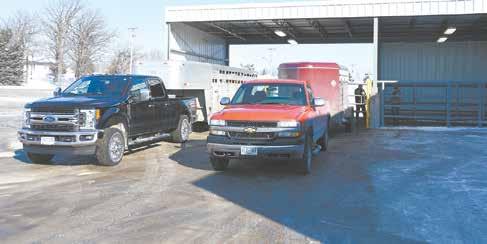
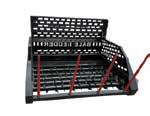

Often, efciency is correlated with speed. At times, this can be true, but that is not always the case. We want cows milked fast, but we also want a low somatic cell count, low bacteria counts, clean cows and as few mastitis issues as possible. It is a tough balance.
Parlor efciency refers to how many cows we can push through a parlor every hour. Often, this emphasizes speed, because the parlor is a choke point on the dairy. We want cows lying down, eating and drinking water rather than spending their time in the parlor, but we can’t sacrice milking preparation to achieve that goal.
There are two terms to refer to the same issue in the parlor when we sacrice milking preparation: bimodal milking and delayed milk ejection. They mean the same thing. They refer to putting a milking unit on, initially having some ow and then having no milk ow before returning to milk ow eventually.
When we see bimodal milking, it can be a clear indication that the cow did not receive enough stimulation right away or our lag time between stimulation was not long enough. Cows need oxytocin release to achieve milk letdown. Milk letdown takes 1-2 minutes after physical stimulation, but we need to actually have
the physical stimulation rst.
If you watch a rotary go by, especially large units, they go fast. The amount of time that an employee has, especially if they are standing in one place, to physically touch the cow, give good stimulation, check for mastitis and clean the teats can be difcult, if not impossible, to accomplish. Recently, we have focused on getting lag time to exactly 90 seconds. Lag time is important, but some of the data indicate it may not matter as much. As long as it is between 60 and 120 seconds, it is probably OK. We could even push it out to 180 seconds. What we need to focus on is can we actually get a minimum of 10 seconds of physical stimulation between all the different physical touching steps? If not, we are not engaging the feedback loop that starts the train rolling with oxytocin release.
So, what? To explain why this matters, we need our second big term: milking efciency. Milking efciency is the amount of time we have milk ow over the total time the unit is on the cow. In a good situation, if the milking unit is on the cow for 4 minutes and 45 seconds, we want that cow to have milk ow for as much of that time as possible, say 4 minutes and 30 seconds, or 95% of the total unit-on time. That is good milking efciency with a lack of bimodal milking. In contrast, poor milking efciency would be a unit-on time of 3 minutes with milk ow of only 2 minutes, or



67%. There is an entire minute where the teat is subject to high vacuum with no milk ow. We’re not getting milk because we didn’t stimulate everything correctly. The secondary issues caused by high vacuum can be teat damage, forming of keratin rings on the teat end, increased mastitis risk and more.
Now the comeback usually is, “Well, if she gets started a little bit late, it’s not that big a deal because she’ll just milk longer.” The data tells us that is false. Late-starting cows do not have longer milking times. The second argument is, “Well, she’ll just make it up at the next milking.” That is also false. This is the worst kind of lost milk because we have already paid for it. We fed her and paid to make the milk, but we failed to capture it.
The reported incidence of bimodal milking on dairy farms is anywhere from 25%-75% of cows and that correlates to a signicant amount of lost milk. A 30to 60-second delay where that unit is on but we do not have milk ow results in a loss of 3 pounds of milk per milking. A greater-than-60-second delay results in 7 pounds per milking.
Remember, bimodal milking is a symptom. The cause is most often poor prepartion and lack of physical stimulation. It is important to note that other issues can cause bimodal milking as well,
including high-stress handling, injections in the parlor and a loud/stressful milking environment.
You do not need fancy sensors to know if you have a bimodal milking issue. Watch your milking procedure and your cows. High vacuum on a teat with no milk ow hurts. Cows experiencing bimodal milking are uncomfortable, and they will let us know by dgeting and kicking units off.
It is a balancing act to get cows through the parlor fast but also do it with good milking efciency. Sometimes the solution is to slow down or milk fewer times per day to take some of the pressure off employees and have less emphasis on speed. We can justify these decisions by capturing the milk we would otherwise lose to poor physical stimulation.
Overall, we should consider the balance of parlor efciency and milking efciency. There are other intangibles on this topic, but slowing down and focusing on smooth parlor operation with proper milk preparation can pay for itself in many situations.
Much of the information in this article was learned from Ron Erskine, DVM, Ph.D., professor emeritus at the Michigan State University College of Veterinary Medicine.






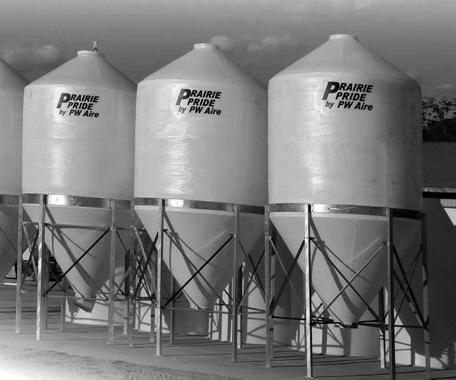

During early lactation, dairy cows naturally mobilize body reserves, including stored fat, to meet the increased demands of milk production. In cases when the mobilization of body reserves becomes excessive, leading to metabolic disorders such as hyperketonemia, or ketosis, it warrants attention.
Ketosis is a common metabolic disorder that occurs in early postpartum in dairy cows and can lead to various consequences during the lactation. Ketosis has been traditionally associated with reduced milk production, compromised reproductive performance and increased risk of herd removal. Nonetheless, the stigma that high ketone body concentrations are always detrimental to the cow’s performance has been challenged by the scientic community lately.
As the scientic community challenges traditional perceptions surrounding ketosis, progressive dairy farmers have long been at the forefront of observing nuanced realities within their herds.
For instance, dairy producers and animal caretakers have observed that some herds have a high prevalence of ketosis; however, the prevalence of other transition cow issues remains low, and cows continue to produce a lot of milk. This raises the question: Do we really need to care about ketosis? The answer is yes.
In some of our previous studies, we demonstrated that not all cases of ketosis are the same. Ketotic cows that produce a lot of milk and continue to eat normally, basic characteristics of a healthy cow, do not experience the same adverse effects from high blood ketone bodies as cows that are unwell. Basically, these results indicate that healthy cows might be utilizing the circulating ketone bodies as an additional source of energy to support milk production. Conversely, the elevated concentrations of ketone bodies in circulation of unwell cows is likely a consequence of their decreased appetite. This emphasizes the need to move beyond solely relying on blood beta-hydroxybutyrate concentrations and underscores the importance of a comprehensive health assessment in ketosis diagnosis.
Another question often asked by progressive producers is: When and how often should I screen my cows for ketosis? The timing when ketosis is diagnosed is certainly of importance. For instance, cows diagnosed with ketosis in the rst week postpartum, regardless of their overall health status, had worse milk production and pregnancy rates as well as an increased risk of leaving the herd than cows without ketosis in their rst week postpartum. Interestingly, these detrimental results were not observed when the cows were diagnosed with ketosis in the second week postpartum. The practical knowledge gained from these ndings indicates that monitoring for ketosis should be prioritized during the rst week postpartum, offering a valuable insight for dairy herd management.
When diagnosing ketosis based on blood ketone bodies, BHB is the pre-
ferred choice due to its stability in the blood and the convenience of measuring it using an affordable hand-held test. For these reasons, we often encounter 1.2 mmol/L as the threshold used for diagnosing ketosis when reviewing protocols and scientic articles, as this cutoff has been identied as being associated with the negative downstream outcomes previously mentioned. However, our group has found that the cows producing the most milk in the herd had blood BHB that exceeded this value. Taken together with the previous data presented, these ndings underscore the importance of considering more than just the BHB concentration when making decisions about ketosis diagnosis. It is crucial to also assess the cow’s overall health and presentation.
Because of the need to nd more effective ways to manage dairy cows, coupled with the challenge of diminishing availability of trained personnel, the utilization of automated health monitoring systems (i.e., rumination sensors) emerges as a potential tool to aid in dairy cow management. Our group has great interest in this topic and have discovered that cows with a high rumination time during rst week postpartum, even when ketotic, produced more milk in the rst trimester of their lactation. With that insight, we have embarked on investigations into various approaches to better characterize animals affected by ketosis and other health events. Preliminary ndings indicate that cows exhibiting a faster increase in rumination time during the rst week of lactation produce an additional 14 pounds of milk per day compared to those with slower rumination time. Additionally, when looking into prepartum rumination, the top 40% of the herd with the greatest rumination time in the week prior to calving experienced a 20% lower risk of ketosis during the rst week post-calving.
The use of rumination meters shows potential for improving dairy cows’ management. As we explore the potential of automated monitoring systems, our ongoing investigations seek to further rene our understanding of ketosis and other health events. Further investigation and integration of applied knowledge from producers will enable us to maximize the benets of automated health monitoring systems and enhance herd management practices.
The management of dairy cows during early lactation is crucial for optimizing milk production and overall herd health. Research challenges the notion that high ketone body concentrations always result in negative outcomes for cow performance. Understanding the nuanced relationship between ketosis and cow health, particularly considering the variation in responses among individual cows, underscores the importance of timely ketosis screening.
Utilizing automated health monitoring systems, such as rumination sensors, offers promise in improving dairy cow management. Our ongoing investigations aim to rene our understanding of ketosis and other health events, with the ultimate goal of enhancing herd health and productivity through informed decision-making and integration of advanced monitoring technologies.





By Feeding TMR!
130-370 cu. ft. capacity
Two largest models will process whole round bales
Twin augers and nearly vertical sidewalls eliminate dead spots
All Stainless Steel mixing chamber for extremely long life
Input power options include electric motor or 540 PTO






hrs ......................$72,000
CIH 8920, FWA, 2,600 hrs ....................$110,000
CIH MX240, 4,700 hrs .............................$85,000
CIH MX220, FWA, 3,600 hrs. ..................$88,000
CIH MX120, 2WD, 3,800 hrs. ..................$72,000
CIH MX120 w/loader ...............................$75,000
CI 7220 w/6500 hrs., 2W ......................Coming In
CIH C90, 4,000 hrs. ..............................Coming In
IH 1466 restored, new 20.4x38
Firestones ..............................................$38,000
IH 1486, 6000 hrs., sharp .....................Coming In
IH 1456, cab ............................................$22,000
IH 1086, 9,700 hrs. w/ldr. ........................$23,000
IH 1066, no cab .......................................$13,500
IH 1086, 5,000 hrs. ..................................$24,000
IH 686 ......................................................$14,000
TILLAGE
CIH Tigermate II, 26’ ...............................$28,000
CIH Tigermate II 26’ w/rolling basket.......$32,000
CIH Tigermate 200 w/basket, 34’ ............$42,500
CIH Tigermate 200, 28’ w/rolling basket..$40,000
CIH Tigermate 200 28’ w/basket .............$37,000
CIH RMX 340 28’ w/mulcher ...................$44,000
CIH 3800 16’ disc ......................................$9,500
How did you get into farming? I was born and raised a dairy farmer. I am the sixth generation on this farm that was homesteaded in 1859. My folks put me on a percentage of the milk check right after high school. Four years ago, we created a limited liability company, which I have shares of.
What are the most signicant ways your farm has changed since you started farming? The most signicant change I have made since farming full time has been the ventilation system in the tiestall barn. We installed tunnel ventilation and highspeed basket fans over the cows. It makes a big difference in milk production when it’s hot out. Previously, we would drop on milk quite a bit when it got hot out. Now, the cows are eager to get in the barn under the fans, and production stays steadier. We also have fans in the calf barn.
What was a challenge you faced in your dairy farming career, and how did you overcome it? Money is always a challenge, but I’m not in farming for the money. You’ve got to love it, or you’d be awfully disappointed. We always nd ways to work through it. I have worked off the farm in the past when I had to.
What is the best decision you have made on your farm? I promised myself a long time ago that this is
Wayne “Willie” Merow of

where I would raise my family, and I am doing that. I also set a goal when I was 25 years old that I would breed polled Red & White Holsteins for 25 years. I am on the 16th year. You’ve got to have goals or else you’re just working.
What three things on the farm can you not live without? I could not live without my silo unloaders. I love them, because I don’t have to run a



pitch fork as much. My loader tractor gets used all the time for everything from barn chores to making rewood. I have to say my farm truck. It’s a do-it-all truck, a big, blue Ram.
What are your thoughts and concerns about the dairy industry for the next year? The biggest concern I have is the input cost versus the milk price and having enough feed due to the weather. We have always had enough in the past, but we always worry.
What strategies do you use to withstand the volatile milk prices? We just tighten up our best and save where we can.
How do you maintain family relationships while also working together? Dad and I have worked together my whole life. We have learned to compromise and not step on each other’s feet. We listen to each other. I try to bite my lip more than argue.
What do you nd most rewarding about dairy farming? To know that I live where I work. It is not a job. It is a lifestyle. What’s outside my back door is most people’s dream.
















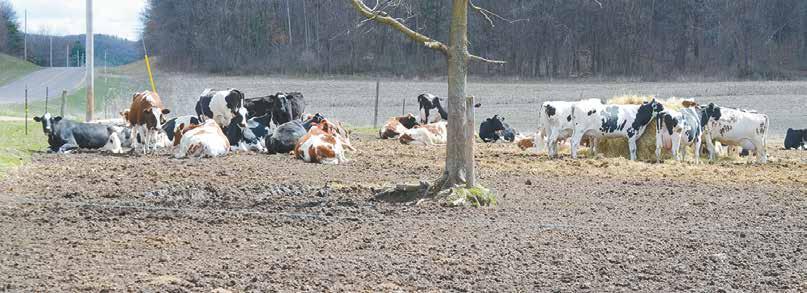
Tell us something special about your farm. It is interesting that our farm was homesteaded in pre-Civil War times. The original shanty that was built on the farm still stands and is used as a granary. For a long time, the original summer kitchen was on the property and was even used as the rst milkhouse.
What are your plans for your dairy in the next year and ve years? For the next year, I plan to maintain the business as it is. In ve years, I hope to have needed updates done like planting equipment and feed storage.
How do you or your family like to spend time when you are not doing chores?
My mother makes a Sunday breakfast at 10 a.m. every weekend. It is a time to be together as a family. People from the community know they can stop by, too, and we have had as many as 20 people come for breakfast. Besides Sunday breakfast, we also like to have company around the re pit and sit on the patio. We have a block party on the last Saturday of July. Also, I have been on the Sparta Area Fire Department for 10 years. Station 3 in Cataract was recently established, and I enjoy working with all the boys there.


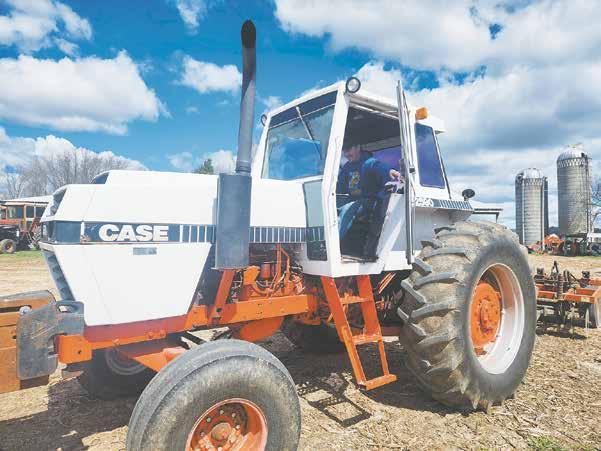












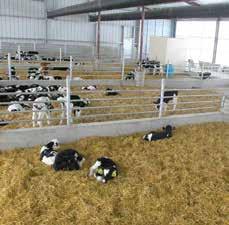
















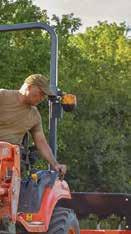







For producers in the Federal Milk Marketing Order 30 or surrounding markets, a vast majority of the milk check is dictated by volume and value of milk fat and protein. While the pay price for milk fat within the FMMO 30 for March was strong at $3.24 per pound, milk protein has been near record lows the past few months. Projections for April and May protein values are even lower and are expected to be less than $1 per pound.
The degree of economic return from amino acid balancing dairy rations uctuates with the pay price on milk protein and, to a lesser extent, milk fat. Current low protein prices generate questions on the value of amino acid balancing. The following are benets to consider.
 By Barry Visser Nutritionist
By Barry Visser Nutritionist
Amino acids are the building blocks of proteins. Conceptually, we continue to place less emphasis on dietary crude protein and more emphasis on the available grams of specic amino acids. Ration modeling programs can predict amino acids contributed from both dietary sources and rumen microbes.
The primary goal of amino acid balancing is to improve protein efciency. As a result, amino acid balancing often yields an improvement in milk protein output. While increased attention is being given to several of the 10 essential amino acids, lysine and methionine are often referred to as the two mostlimiting amino acids for milk protein synthesis in a lactating dairy cow diet. Supplemental methionine research not only supports greater protein percentages but also an increase in milk yield and milk fat. This is an important consideration given the value of milk fat in the current FMMO 30 market.
The benets of feeding rumen-protected methionine go well beyond milk component responses.
Reproduction: Supplemental rumen-protected methionine fed to dairy cows has been shown to affect various aspects of reproduction, including follicle quality, the uterine environment, embryo composition and pregnancy recognition. As a result, methionine has been shown to decrease the risk of embryonic loss in dairy cows.



Transition cows: Supplementing rumen-protected methionine through the dry period has been shown to improve dry matter intake and energy-corrected milk yield in early lactation cows. Transition cows undergo metabolic and physiological changes as they calve and enter lactation. While negative energy balance is commonly referenced, lactating cows also experience a period of signicant negative metabolizable protein balance. Not only are cows mobilizing fat, but they are also breaking down muscle. Methionine has a role in numerous metabolic pathways, including pathways involved in lipid metabolism, inammation and oxidative stress, making supplemental methionine a logical choice to consider for transition cows.
Heat stress: Researchers at the University of Illinois found that supplementing rumen-protected methionine to cows exposed to heat stress resulted in improved milk fat percentage compared to control cows not receiving supplemental methionine.
When evaluating your return on investment from supplementing rumen-protected amino acids such as methionine, it is important to recognize that the benets can go beyond an improvement in milk protein. In addition to increases in milk fat yields, long-term benets for cow health and reproduction can also be achieved. Not all herds are created equal, and certain bottlenecks and herd dynamics can elicit different results. Work with a nutritionist to determine what strategies work best for your dairy.
Barry Visser is a nutritionist for Vita Plus.
Midwest Dairy participated in the Central Plains Dairy Expo in March in Sioux Falls, South Dakota. There, we had the pleasure of connecting with farmers through face-to-face conversations at our booth and sharing the impact of checkoff through a tasteand-learn session that brought checkoff partners to life.
 By Beth Bruck-Upton Midwest Dairy
By Beth Bruck-Upton Midwest Dairy
The Midwest Dairy booth was a popular destination for dairy farmers to connect with Midwest Dairy staff, offering great conversation and connecting farmers to available resources. For the second year, attendees eagerly anticipated the engaging Midwest Dairy taste and learn experience, featuring checkoff partners Domino’s, Dollar General Corporation and South Dakota State University. These partners offered samples of innovative dairy products consumers enjoy today and showcased information and campaigns checkoff is executing to help grow trust and sales of dairy. Attendees learned more about the reason behind each partnership, asked questions and experienced these innovative products.
During the taste and learn experience, farmers explored the Domino’s partnership, learning about its potential to drive cheese sales. Of all Domino’s locations, 12% are within Midwest Dairy’s 10-state footprint. Domino’s recently added pepperoni stuffed cheesy bread to its lineup of stuffed cheesy bread and is seeing success. The oven-baked breadsticks are stuffed with cheese and pepperoni, covered in a blend of cheese made with mozzarella and cheddar, and seasoned with Parmesan and garlic. Dairy Management Inc. supported Domino’s with consumer research, which helped make the product launch a success. Checkoff also plans to work with Domino’s on an enhanced loyalty program that continues to grow and appeal to customers, ultimately driving pizza and cheese sales. Domino’s is actively innovating, presenting opportunities for collaboration to increase sales of U.S.-produced cheese in their products. Farmers sampled these pepperoni-stuffed cheesy breads during the event as they learned more about the partnership.
Another recent partner, Dollar General, collaborated with Midwest Dairy on a campaign during the 2023 holiday season and the new year. The partnership increased awareness and sales of uid milk through strategically placed in-store signs. These signs focused on affordable nutrition by promoting milk as a good value, using our Undeniably Dairy tagline, “Real Milk. Real Nutrition.” Signage also promoted pairing milk with popular snacks, like cookies. The signage used throughout Dollar General stores was on display for farmers to see, and milk and cookie samples were available for tasting. This effort began as a joint program with Midwest Dairy and the United Dairy Industry of Michigan but has continued growing as other dairy checkoffs joined the campaign to grow dairy’s footprint.
Attendees also took a trip back in time as they found themselves on a “college campus” by exploring Generation Z activations that build trust with SDSU students. Activations include checkoff work with the
SDSU Miller Wellness Center, interacting with fans at campus athletic games and partnering with athletes like track and eld superstar Claire Beckman to share the story of how dairy fuels her life with her fans and followers. Checkoff displayed a backdrop featuring this partnership and offered a build-your-own yogurt parfait station. This yogurt station was similar to the one students enjoyed at the SDSU Miller Wellness Center.
This session provided dairy farmers with more than a tasting experience; it showcased how checkoff insights and research can lead to product innovation and sales opportunities working with the right partners. During this event, farmers also discussed how
these partnerships impact dairy sales. Attendees engaged with the talented people behind the partnerships as well as national and regional checkoff staff. Attendees saw that behind every partnership is a commitment from both partners and checkoff to bring dairy to life in new and compelling ways.
Midwest Dairy always enjoys this event and plans on returning to CPDE next year. I encourage all dairy farmers who can make the time to come out, ask questions and experience what their checkoff dollars are doing for them in the marketplace. If you are unable to join us, look for these products near you as they continue to drive dairy demand and trust with consumers.
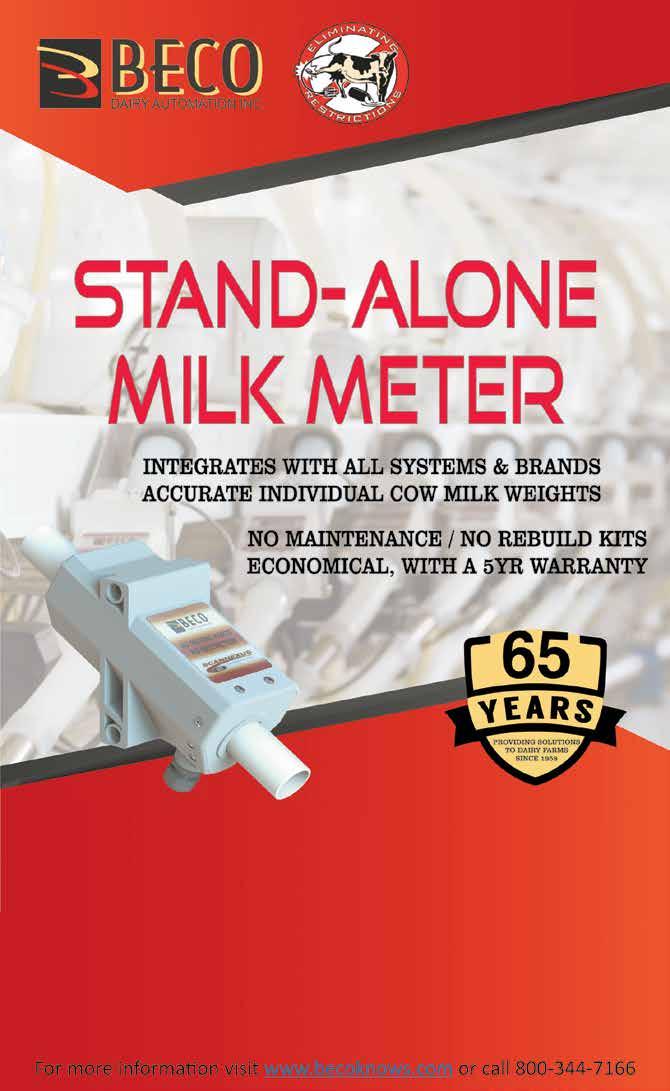
My wife and I recently attended an evening meeting of a two-cylinder club. This was quite exciting for us as it’s as close as we’ll ever get to going nightclubbing.
For the uninformed, a two-cylinder club is not some sort of a double-barreled cudgel; it’s an association of people who are antique tractor acionados. Specically, they are Johnny Popper junkies. Green and yellow gear heads.
Having grown up driving John Deere As and Bs, I totally empathize with those folks. I am among those who think that the sound of a Johnny Popper is as soothing as a mother’s heartbeat.
A meeting of a two-cylinder club is one of the few places where a heated argument might break out over the virtues of a pony motor versus an electric starter. It’s the rare gathering where the words, “My favorite tractor is a Farmall M,” would prob-
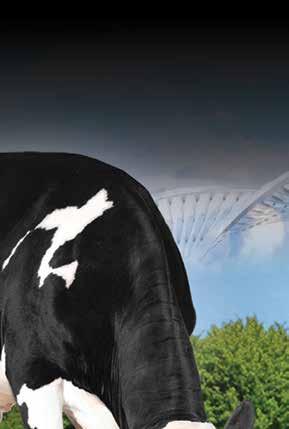
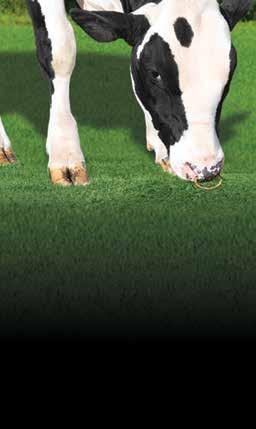


ably lead to sticuffs.
A guy named Bob Tabbert asked me to come and speak at the meeting of his two-cylinder club. I could tell instantly that he was a machine head, mainly due to the fact that Tabbert is suspiciously similar to the word “tappet.”
Several dozen souls attended the meeting of the Siouxland Two-Cylinder Club. As one might imagine, there were a lot of plaid shirts and seed corn caps in the room. A number of ladies were also in attendance, which was a good thing. We all know what a rowdy crowd those antique tractor buffs can be.
It was gratifying to see that there were young families at the meeting. We need young people to move the shift lever of enthusiasm and engage the clutch of dedication in order to keep our traditions plowing ahead. Without the sparkplug of youth, our

past would soon be as dead as a waterlogged magneto.
When our two sons were small, we exposed them to old-time tractors on a regular basis by taking them to such things as Old Timers Day in Volga, South Dakota, and the Prairie Village Steam Threshing Jamboree in Madison, South Dakota. Both of our boys were highly impressed by these prehistoric contraptions, but the biggest impact was on our eldest son, Paul.


The rst time we returned home from a visit at Prairie Village, Paul, who was 4, constructed a fully functional miniature steam engine. Sort of. Let’s just say that the fulllment of his dream was stymied by the limitations of Lego technology.
Speaking of technology, when I was growing up on those tractors, I was painfully aware of how far behind the times we were. After all, the Space Age was well under way; yet, there I was driving a machine that was deemed modern at the dawn of the Second World War. It was like using a handcranked, punch-key cash register in this age of computerized laser barcode scanners.
7HO16962 OH-MY1,400
7HO16276 SHEEPSTER1,371


14HO17012 CLEARVIEW1,368
7HO16735 KARL1,347
7HO17095 JACKHAMMER1,330

14HO17023 FOUGHTY1,320
7HO16485 SUNDANCE1,315
7HO16866 HUMO1,312
250HO16691 TRANSFER1,297

7HO17106 HADZUKI1,286
14HO16755 SOCKS1,282
7HO16644 RIMBOT1,279

250HO16741 HARDIN1,277 21680
250HO16812 CRIMSON1,274
When I was young, I heard rumors of a thing called a tractor cab but had never seen one in person. Supposedly, cabs kept the operator out of the wind and the rain and mitigated the effects of cold and heat. My deep-seated fear of being spattered by the shrieking seagulls that wheeled overhead would have been eliminated by one of those mystical cabs.
I was excited as a barn cat at a mouse convention when Dad purchased a John Deere 60. The 60 had live power and live hydraulics and power steering. Such marvels.
I would have never believed how far tractor technology would advance in my lifetime. Who could have imagined tractors equipped with GPS and autosteer along with cabs that swaddle the operator in a cocoon of luxury, capable of giving him a bath, a shave and a haircut, and trimming his ear hair?
7HO16935 GIANT1,275 20979
250HO17118 SHETEK1,268
14HO16827 SCAR1,268
7HO16825 ANDRI1,258

250HO17100 ODIRECT1,251
7HO16688 STATON1,241





Tractors are connected to the internet, allowing their operators to remain in constant contact with the world. He or she can update their Instagram page (I’m discing the north 40 and am about to make a turn on the far headland.) or post on Snapchat while shopping for shoes and watching “Green Acres” reruns.
Like most young people, I couldn’t wait to leave behind the stodgy old stuff of my youth. Like many aging baby boomers, I have come to regret my rush to toss out those things. What we once scorned as old junk is now lauded as classic and the sort of thing Warren Buffett would invest in.
And had we hung onto those tractors, I might have been motivated to join a particular type of classic tractor club. The kind of organization where the words, “He’s only hitting on two cylinders,” would be considered a compliment.
Jerry Nelson is a recovering dairy farmer from Volga, South Dakota. He and his wife, Julie, have two sons and live on the farm where Jerry’s great-grandfather homesteaded over 110 years ago. Jerry works for Dairy Star as a staff writer and ad salesman. Feel free to email him at jerry.n@dairystar.com.

Time is running out for those who have not yet signed up for the 2024 Dairy Margin Coverage program. This is an important risk management tool for producers. January and February payments have triggered. Sign-up ends April 29. Producers with dairy are encouraged to schedule an appointment in your local ofce to sign up for DMC if you have not completed this already.
As you prepare for spring planting and harvest of summer forages, I pose a few questions.
Are you familiar with the Farm Storage Facility Loan program offered by the Farm Service Agency?
Many know this as the grain bin loan program, but it is so much more. As livestock producers, did you know that this program can be used to nance chopper boxes, end dumps, forage blowers, silage pads (concrete and asphalt), bunker silos, gravity boxes, grain vacs and more? Did you know this program nances bulk milk tanks, hay storage sheds or walk-in coolers? Basically, most anything dealing with the storage and handling of raw commodities is likely eligible. Did you know that these items can be used?
The FSFL program provides low-interest nancing for farming operations to build or upgrade storage and drying facilities, purchase portable (new or used) structures, commodity handling equipment, or to purchase storage and handling trucks.
A variety of structures, handling equipment and trucks are eligible under this loan.
Interest rates are in the 4% range based upon the term of the loan. Loans may range from three to 12 years. If there is construction required, which would include ground disturbance such as site preparation, an environmental review must be com-
pleted before actions are approved. Contact a FSA ofce early in the planning process to determine what level of environmental review is required for the program application so that it can be completed in a timely fashion. To learn more about the FSFL program, visit https://www.fsa.usda.gov/pricesupport or contact a FSA county ofce.
Before you start new construction for a loan, you might have gotten through the FSFL program or other loan programs administered by FSA, make sure to have all your environmental regulations met before the project has been approved.
For all FSA programs, an environmental review must be completed before actions are approved, such as site preparation or ground disturbance. These programs include, but are not limited to, the Emergency Conservation Program, FSFL program and farm loans.
If project implementation begins before the FSA has completed an environmental review, the request will be denied. Although there are exceptions, it’s important to wait until you receive written approval of your project proposal before starting any action.
Applications cannot be approved until the FSA has copies of permits and plans.
Are you looking for assistance from the FSA in the form of a direct loan?
A new, simplied direct loan application is available for all producers seeking a direct farm loan from the FSA. The application, reduced from 29 to 13 pages, provides improved customer experience for producers applying for loans and enables them to complete a streamlined application.
Producers also have the option to complete an electronic llable form or prepare a traditional, paper application for submission to a FSA ofce.
Coupled with the loan assistance tool, the simplied application provides all applicants access to information regarding the application process and

assists them with gathering the correct documents before they begin the process. This will help farmers and ranchers submit complete applications and reduce the number of incomplete, rejected or withdrawn applications.
The direct loan application and loan assistance tool are the rst of multiple farm loan process improvements that will be available at farmers.gov. Other improvements that are anticipated to launch include:
— An interactive online direct loan application that gives customers a paperless and electronic signature option, along with the ability to attach supporting documents such as tax returns.
— An online direct loan repayment feature that relieves borrowers from the necessity of calling, mailing or visiting a U.S. Department of Agriculture Service Center to pay a loan installment.
Stay safe this spring, and make safety your No. 1 priority.
Farm Service Agency is an equal opportunity lender. Complaints about discrimination should be sent to: Secretary of Agriculture, Washington, D.C., 20250. Visit www.fsa.usda.gov for application forms and updates on USDA programs









........... $499,900
JD 9600 2021, Kernel Processor, PRWD, 892 hrs., 538 CH hrs., #565399 ........... $420,000
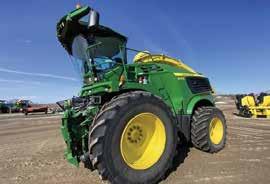




JD 9600 2020, Kernel Processor, PRWD, 1310 hrs., 775 CH hrs., #565393 .........
JD
JD

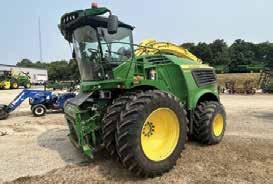




I have an earworm song swirling in and out of my mind as I decipher the story I want to tell.
The Beatles sang, “You say yes. I say no. You say high. I say low. I don’t know why you say goodbye when I say hello, hello, hello.”
We’ve been saying goodbye quite a bit around here, but we are also saying hello this spring to new ideas. It all started with a simple letter.
Instead of a letter announcing the annual Benton County Dairy Herd Improvement Association banquet, we received a notice on the transition of responsibilities from the county to the state association. It was the end of an era, as Benton County DHIA ceased to exist.
DHIA has been such a big part of our family farm’s story since our rst test day in 1974.
The top cow that year was Nancy, a purebred cow
from our herd. This intrigued Mel Hackett, a registered breeder neighbor across the elds to the east. He popped over for a look at this cow. Ralph was excited to show him Nancy. He explained how he had purchased her granddam at the St. Cloud Orphanage Dairy Sale. She was a registered animal, but Ralph never kept the paperwork up on her descendants.
It didn’t take Mel long to realize we qualied for the Holstein Association USA open herd book program to capture “lost” purebred cattle. This was the rst step in the creation of RALMA Holsteins.
Every month, it was a race to the mailbox to get the latest DHIA report. With a keen eye, Mark would study the production reports to discover which family lines he wanted to develop and which animals didn’t make the mark. Ralph always said the purebreds had to milk better than the grades to stay in the herd. The
monthly reports provided Mark with the information he needed to justify keeping his cows and converting the herd to registered cattle.
Eventually, Mark would serve on the county board in the early years of our marriage. There were long night meetings and a revolving door of testers to train. It was challenging, but come banquet time, it was all about having fun with dairy families. The banquet was our annual date night. It was a time to get dressed up and head to town to laugh and reconnect with other families across the county after a long winter season. The board would eventually schedule the banquet as close to Valentine’s Day to give the farmers a free pass in case they forgot.
Over the years, it became a family affair with the kids. Many of them had been going since they were in strollers. As the kids got older, we convinced them they could accept the award for low somatic cell count or high production cow since it was their favorite cow. Today, the grandkids gaze over the line of trophies as to which one they will claim as champion of family contests.

When Ralph retired from dairying in 1987 (the year we were married), there were 107 herds on test milking 5,778 cows for an average production of 16,512 pounds of milk per cow. In 2022, Benton County had 38 herds with almost 17,000 cows on test. The top production cow was No. 7670, who produced 40,868 pounds of milk in 305 days.









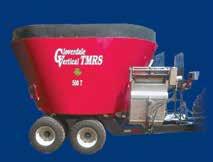

My, how things changed in those 35 years. We say goodbye to lled banquet halls brimming with laughter and clanking silverware. We say goodbye to a time where everyone knew their neighbor’s family lineage as well as their family’s cow names. Today, we say hello to new production and information at our ngertips. At least we get to keep our same tester.
As we say goodbye to the county DHIA traditions, we are saying hello to adventures. In keeping with the family motto of “using what you have and making due with what you’ve got,” Austin is pushing us to say hello to a world of production technology.
Austin has been retting the planter to incorporate a more accurate placement of seed and fertilizers. He is also creating his own portable bracket system out of scrap metal to allow us to place a GPS system on tractors. He is chanting a new motto of “spend money to save money.” He has crunched the numbers to support his vision of what he wants to see develop for the land … just as his dad did when he scoured the DHIA reports all those years ago to improve the herd.
I’ve noticed within my family how struggles between goodbye and hello can bring a few sour notes to a song. Old men forget not just birthdays and anniversaries but memories of their struggles to make their mark on the farm. It wasn’t that long ago when we wanted to say hello to a new vision.
Aren’t our sons and daughters truly following the family trail as they step on the path with their own vision and dreams … just like we did from our fathers before us? We’re at a point of you say goodbye, and
I say hello. This is going to be a sweet song to have caught swirling around in my head.
As their four children pursue dairy careers off the family farm, Natalie and Mark Schmitt started an adventure of milking registered Holsteins just because they like good cows on their farm north of Rice, Minnesota.



What an interesting, and concerning, spring we are having. At any given time, there are a handful of concerns swirling around in my thoughts.
Our livestock hauler said the auc-

 By Sadie Frericks Columnist
By Sadie Frericks Columnist
tion has twice as many herd sell-outs scheduled for this spring as they typically do. Others have said the actual number is over 30 herds. That’s a lot of dairy farms exiting the business in our part of the world; most of them are likely smaller farms like ours.
I’m certain the supply of milk won’t be affected; other dairy farms will increase output to keep processing plants full. What concerns me are the impact on the families exiting the dairy business, the impact on our local economy, and the impact on the dairy-based businesses that we rely on to support our farm. Without a doubt, small- and mid-sized dairy farms spend more dollars per cow in their communities than larger dairies. Put another way, the same cow on a smaller farm generates more economic activity than the same cow on a larger farm.
Our Dairy Margin Coverage statement for February made me laugh but in a sad way. Because of the signicant difference between Class III and Class IV milk prices, and because the higher Class IV milk price is buoying the allmilk price, the payment for February was 6 cents per hundredweight. For those of us in the Class III-heavy Upper Midwest, it’s like salt in the wound. Our February Class III market price was $16.08 cwt versus the $20.10 cwt all-milk price used in the calculations. Even if the Upper Midwest average feed cost is below the $11.16 cwt used by DMC, our margin above feed cost is still in the $6 cwt range, not $9.44.
I would rather not need programs like DMC and Dairy Revenue Protection, but the truth is that these programs
help move the needle on the cash ow gauge. When the gauge says we have enough, we’re able to reinvest in our dairy to make improvements. When the gauge says there’s not enough, we trim expenses to match outows to inows. The way it looks right now, with Class III prices hovering around breakeven, DMC not paying out, and everincreasing input costs, we’ll be doing more trimming than investing this year. Again, this has a ripple effect in our local community.
On top of economics, we now have bovine inuenza A, or H5N1. At this time, Minnesota doesn’t have a testpositive herd. Our business model doesn’t require regular transportation of cattle, but I’ve been tuning into webinars and reading updates anyway. The biosecurity recommendations and raw milk handling recommendations from the U.S. Department of Agriculture Animal and Plant Health Inspection Service, while necessary, will not make dairy farming or milk hauling any more enjoyable. We already canceled one farm tour scheduled for June because of biosecurity reasons. I hate to think about the other ripple effects this virus could have.
I shared these concerns with lawmakers while lobbying in Washington, D.C., with my cooperative last week. We were there to lobby for passage of the farm bill and to raise awareness of the tax provisions expiring in 2025, but dairy farm economics, DMC and H5N1 t into those discussions.
Unfortunately, Congress is plagued by its own set of ripple effects. For every lawmaker or pundit who was condent that Congress would pass a farm bill this session, another voice expressed skepticism. What was encouraging, however, was the universal feeling that the farm bill will continue to be legislated in a bipartisan manner.
I don’t have any other encouraging thoughts with which to close this column. I imagine these concerns will continue for some time. But, as I tell myself when the dairy business feels heavy, the sun is shining, the grass is greening, the cows are thriving, and we’ll keep farming.
Sadie Frericks and her husband, Glen, milk 100 cows near Melrose, Minnesota. They have three children: Dan, Monika, and Daphne. Sadie also writes a blog at www.dairygoodlife.com. She can be reached at sadiefrericks@ gmail.com.

